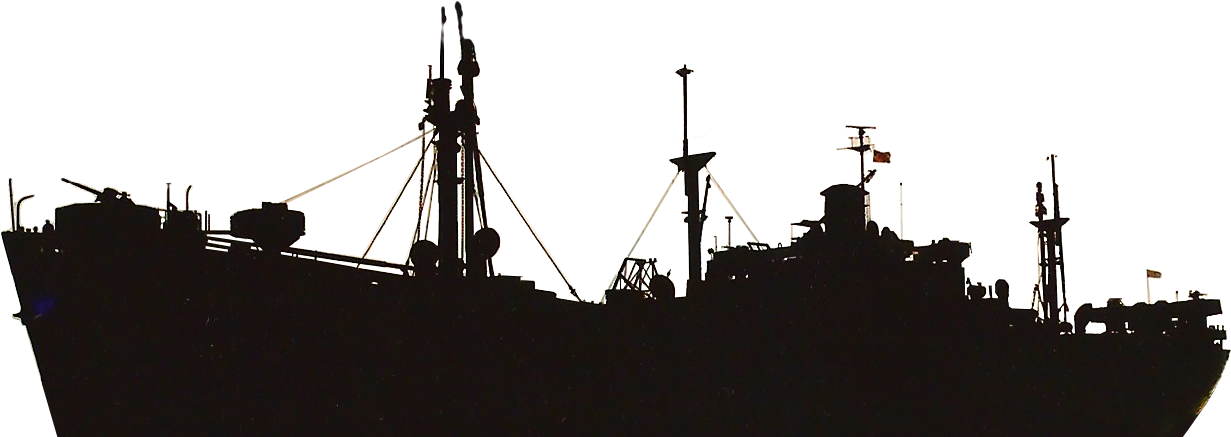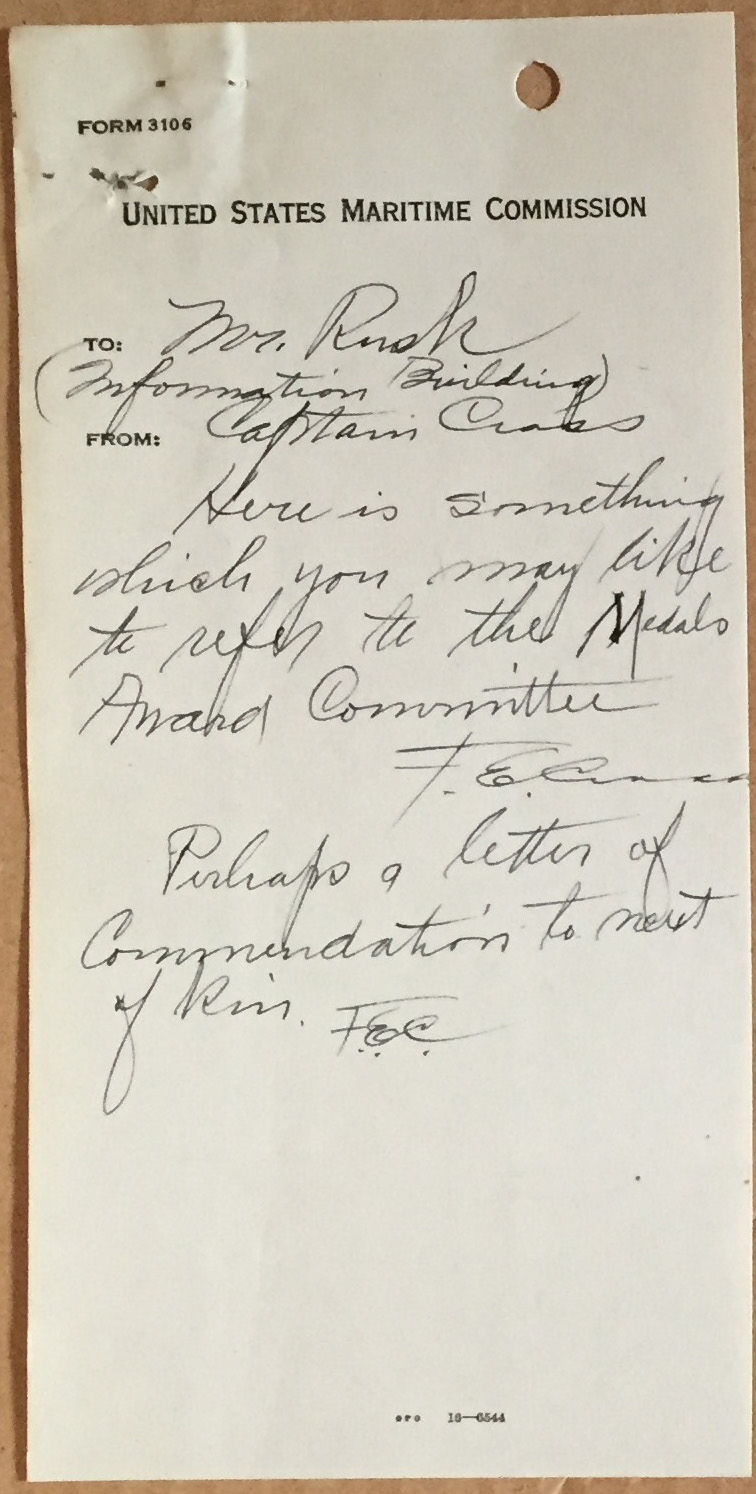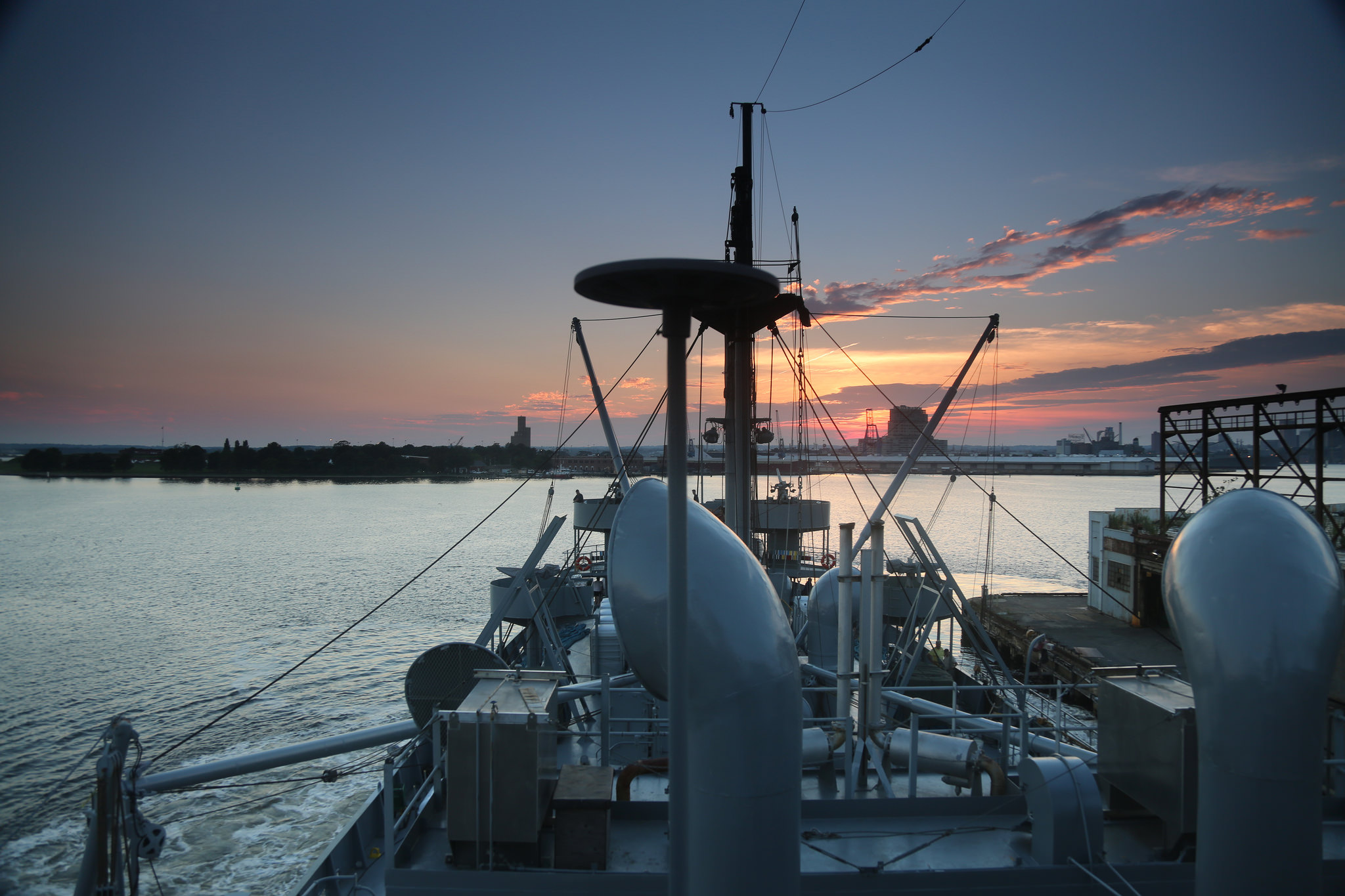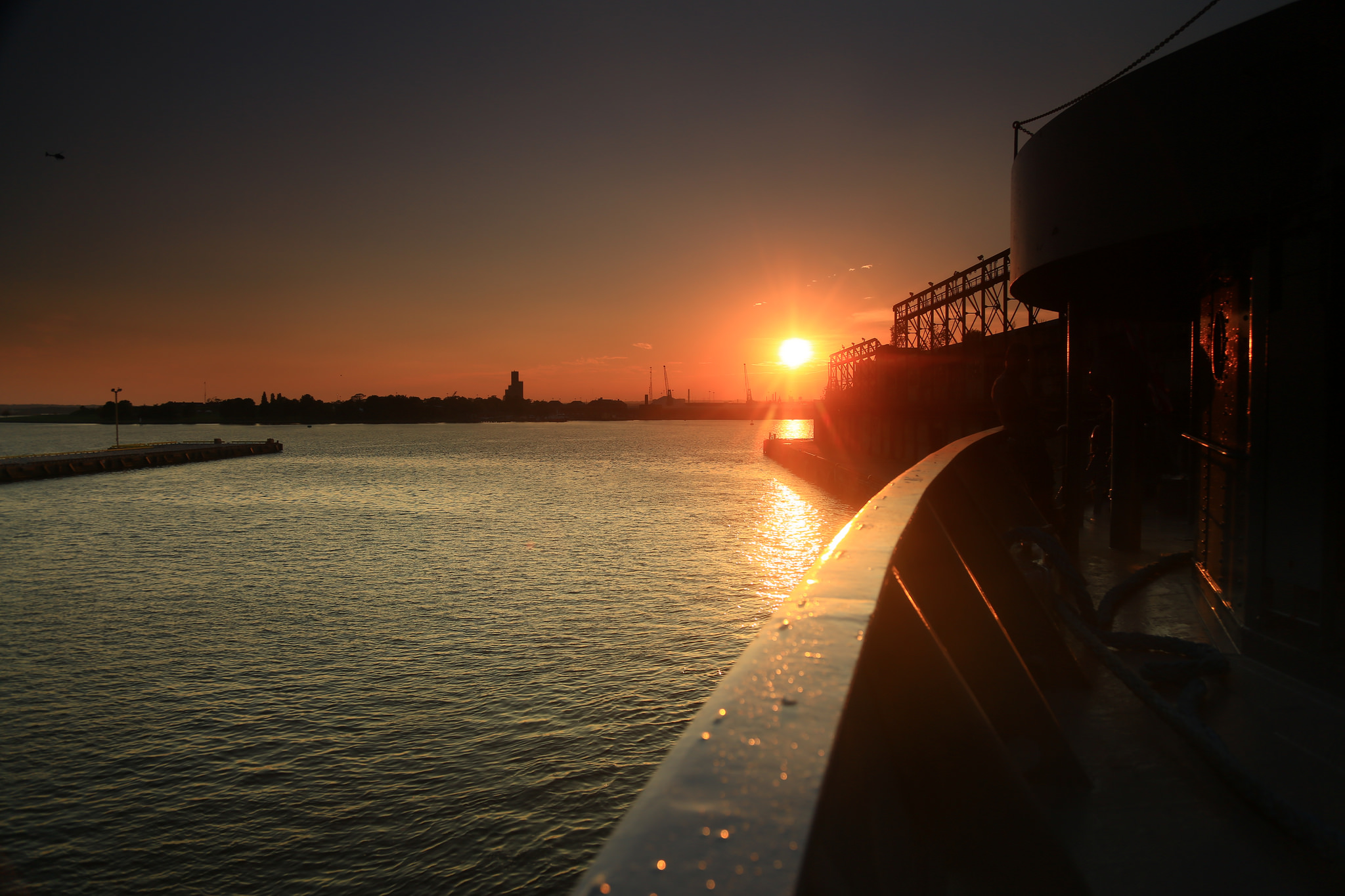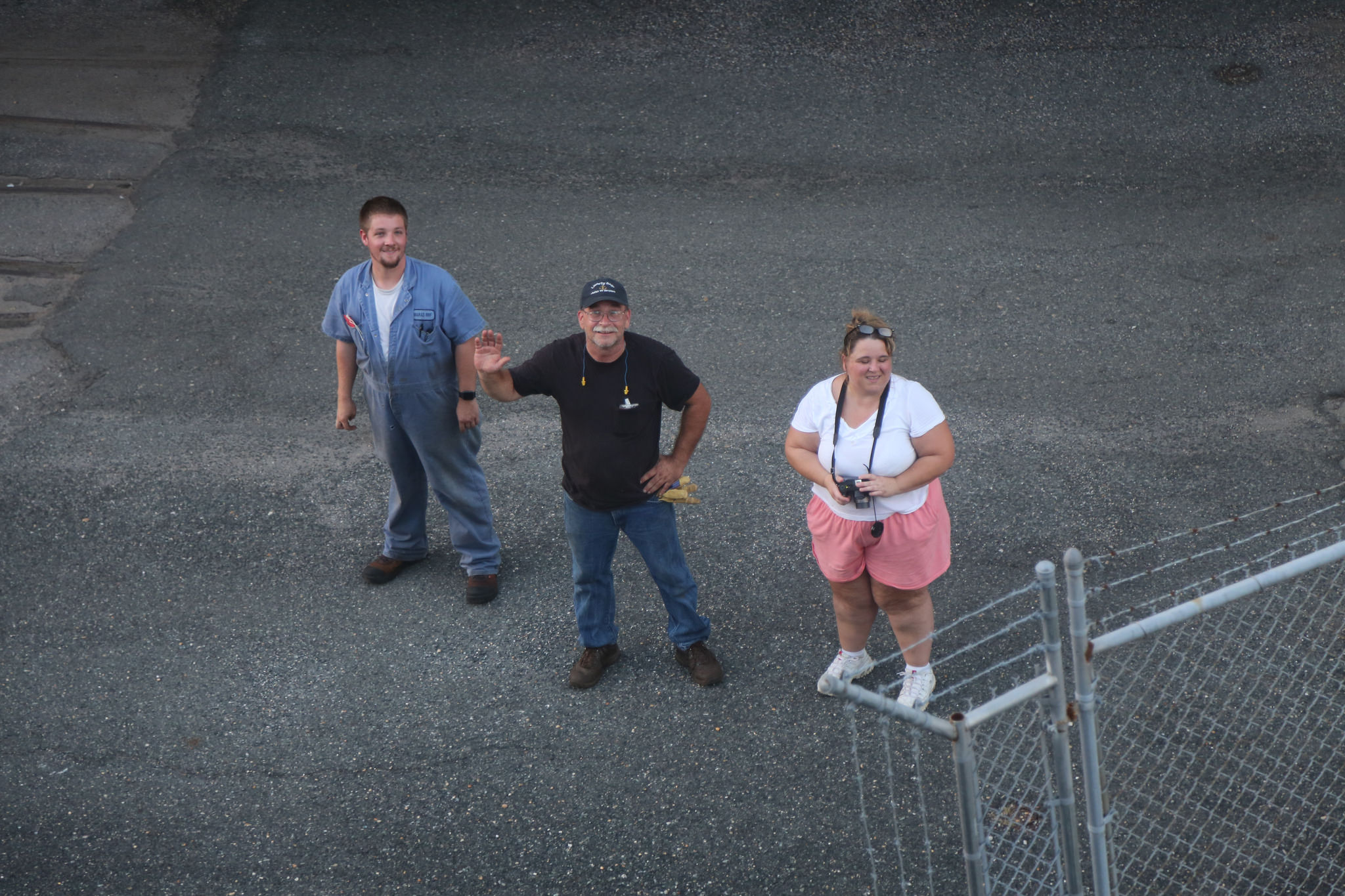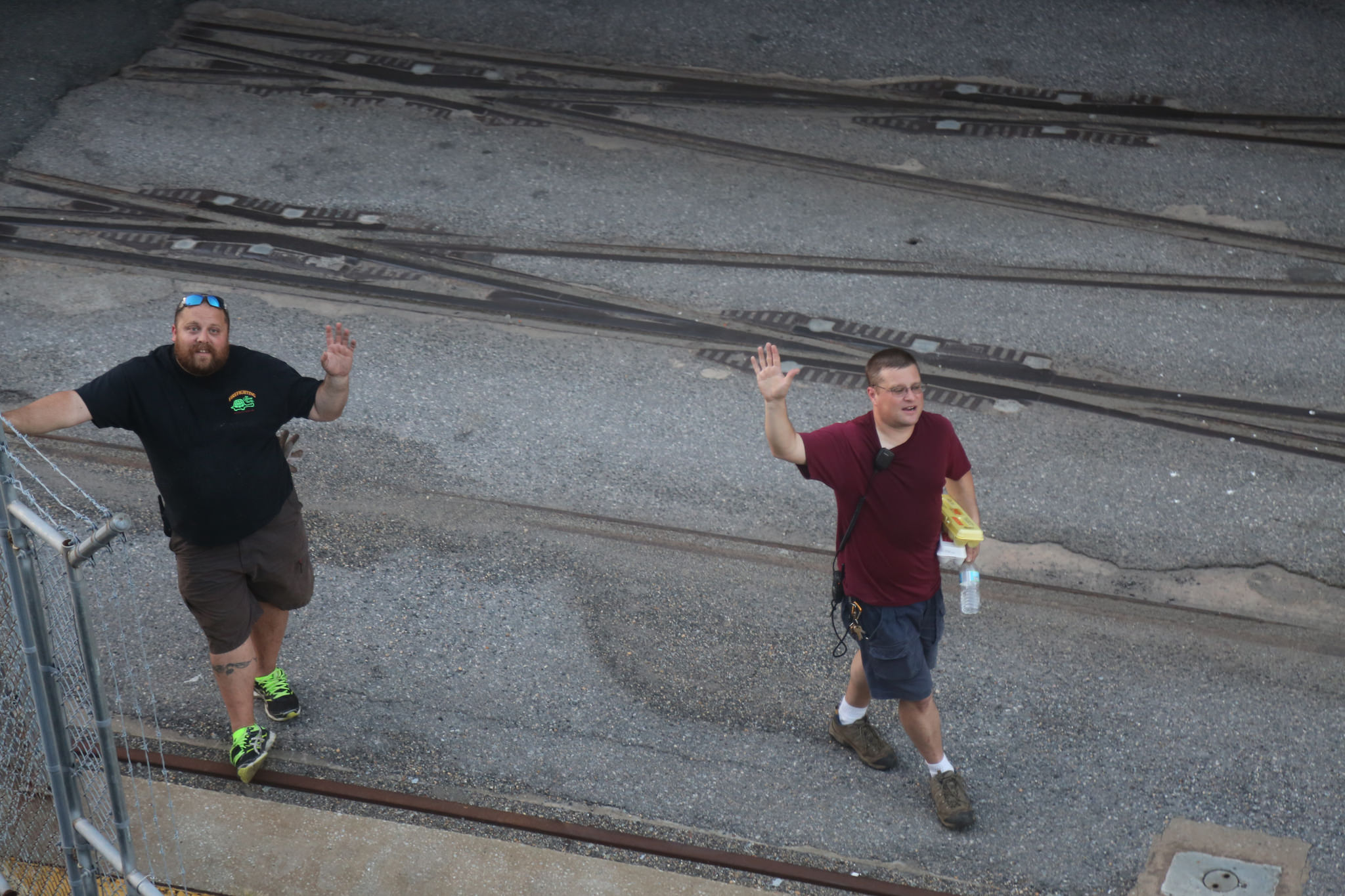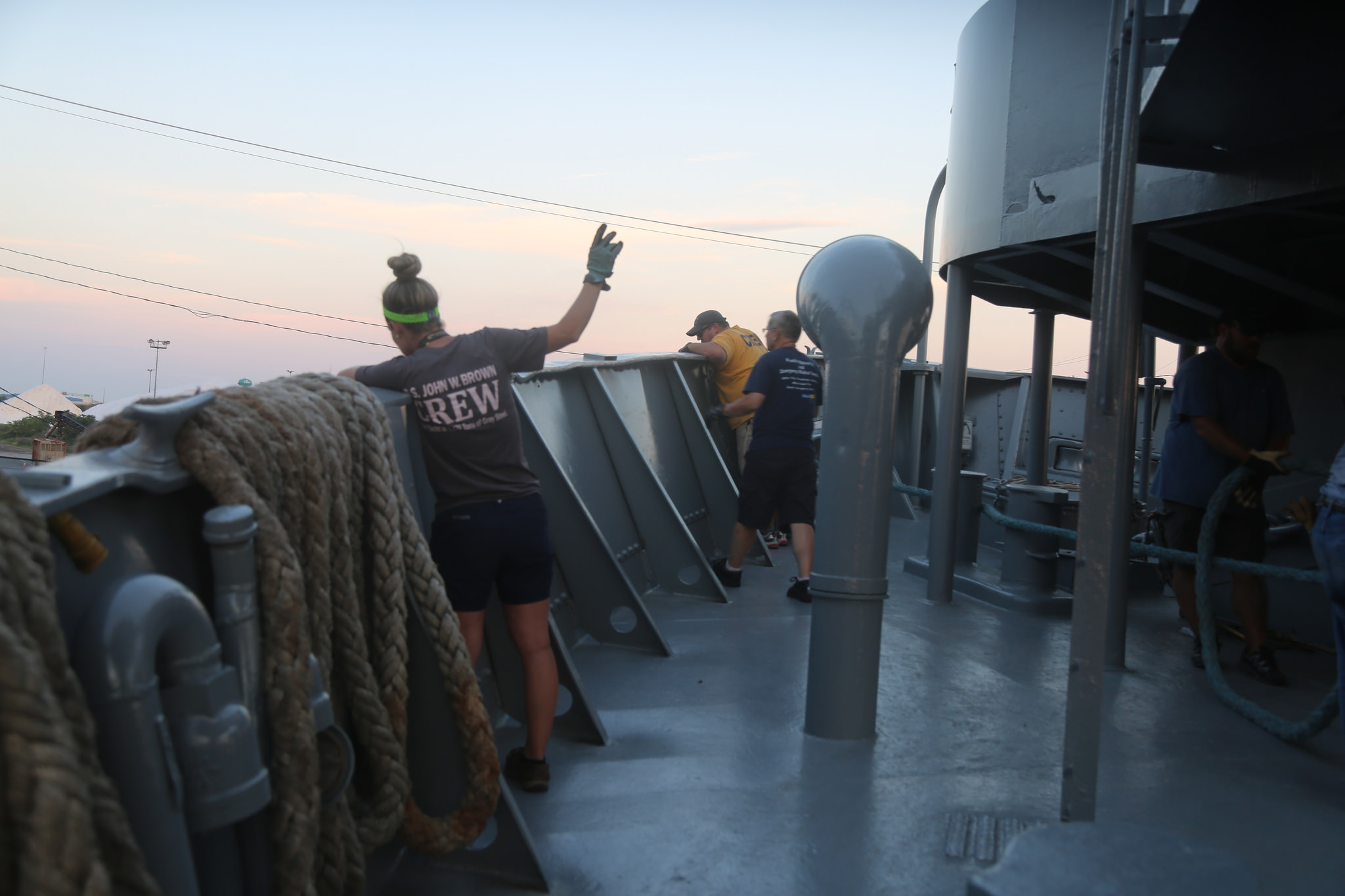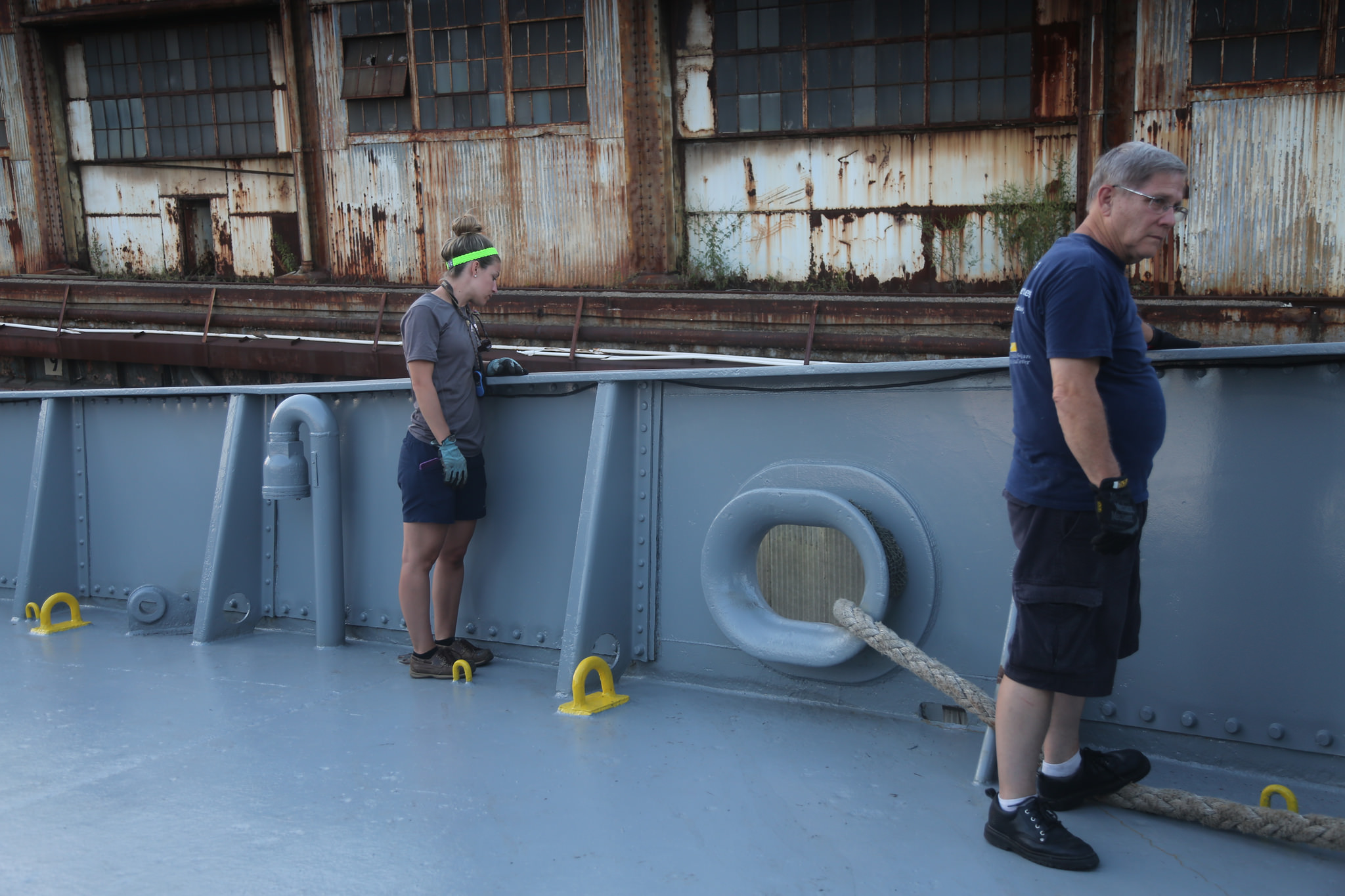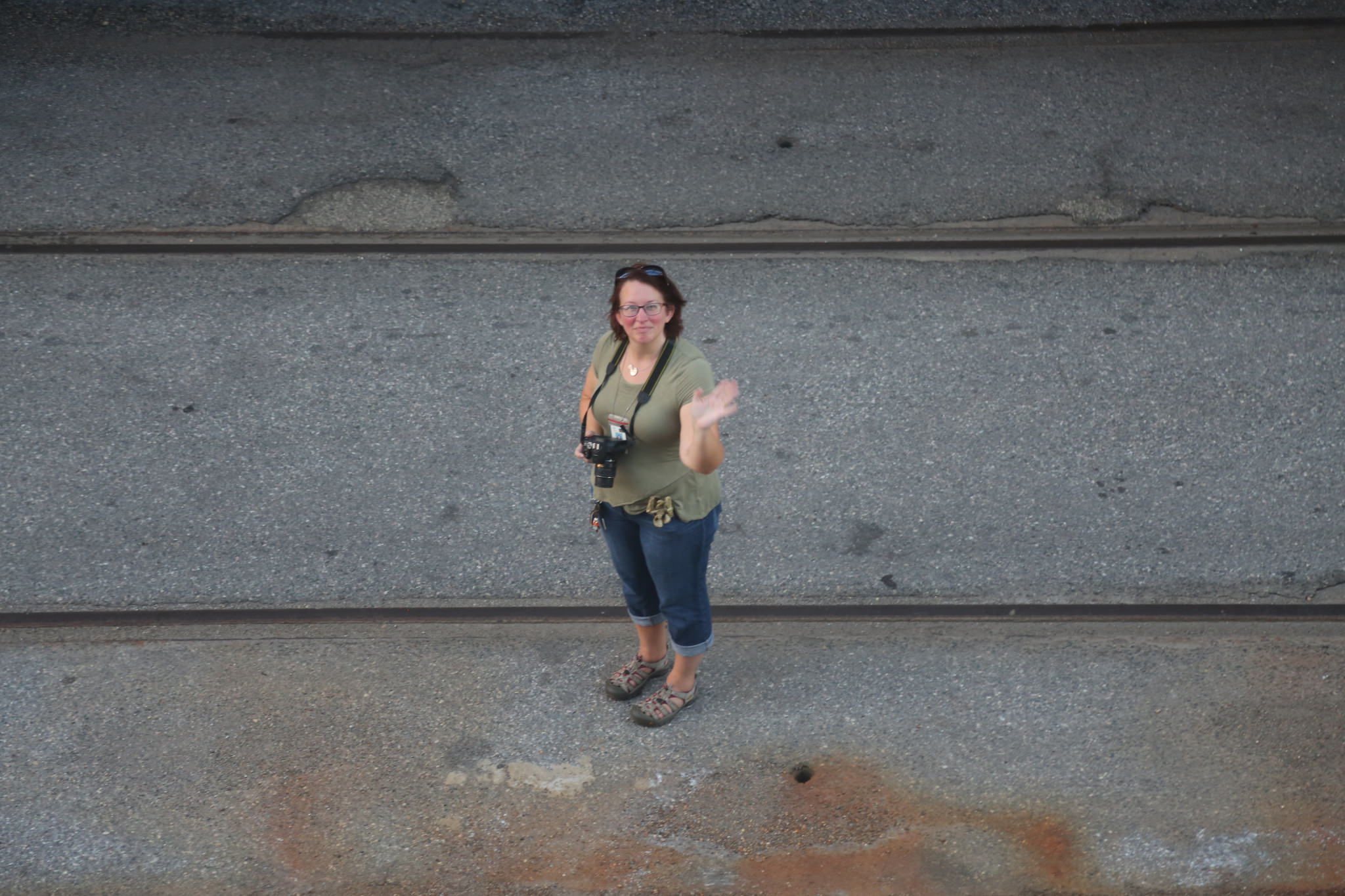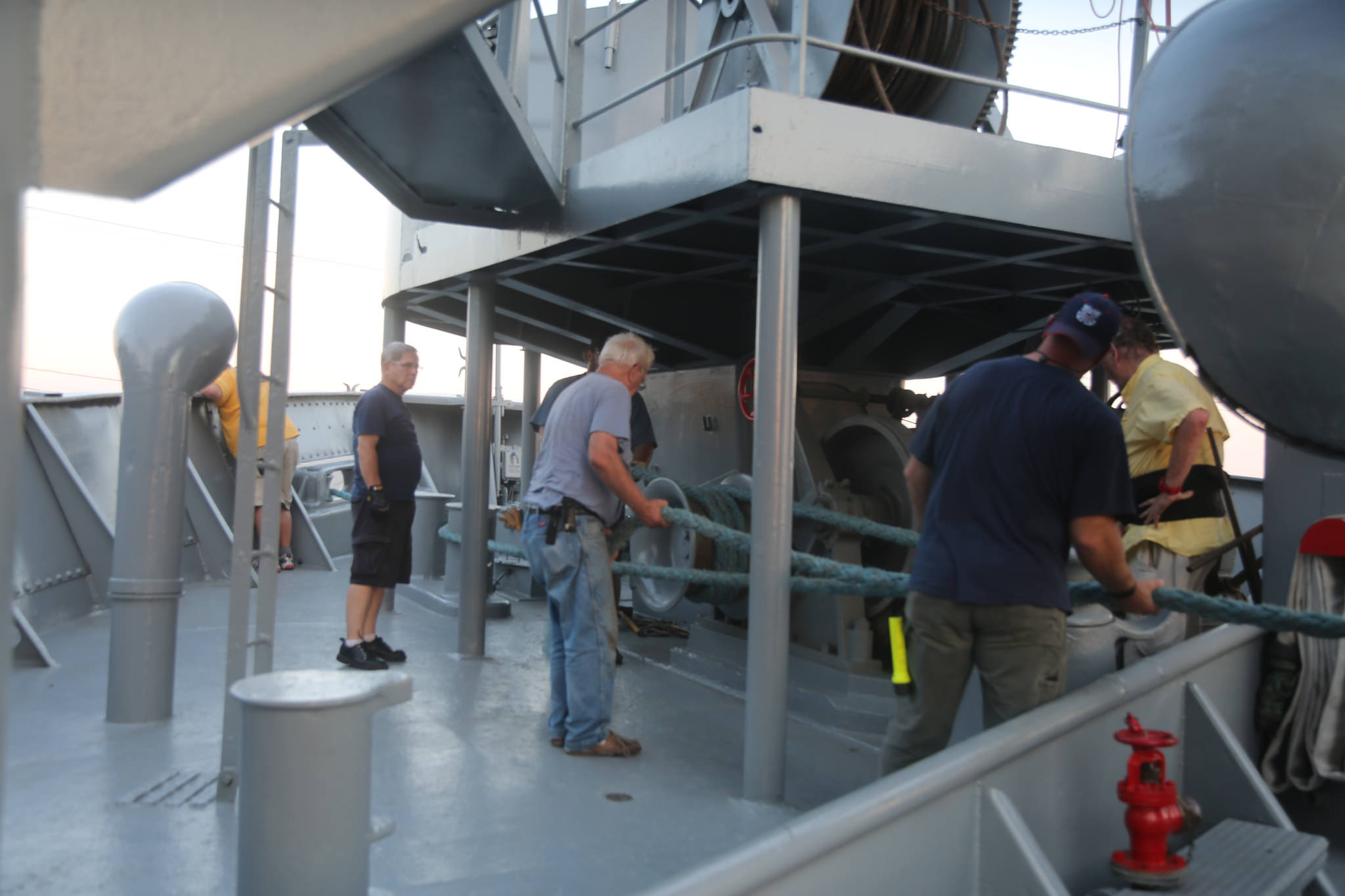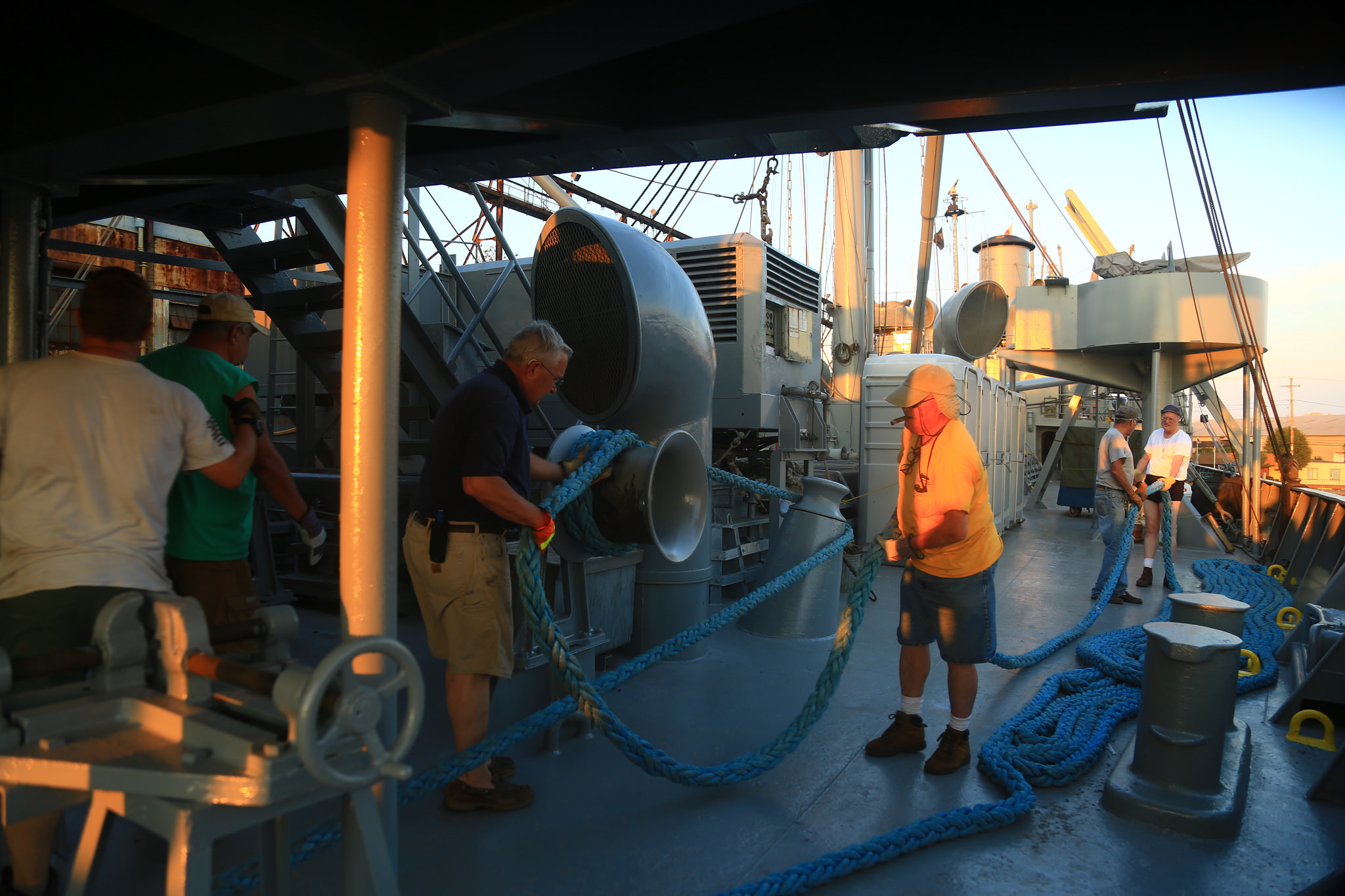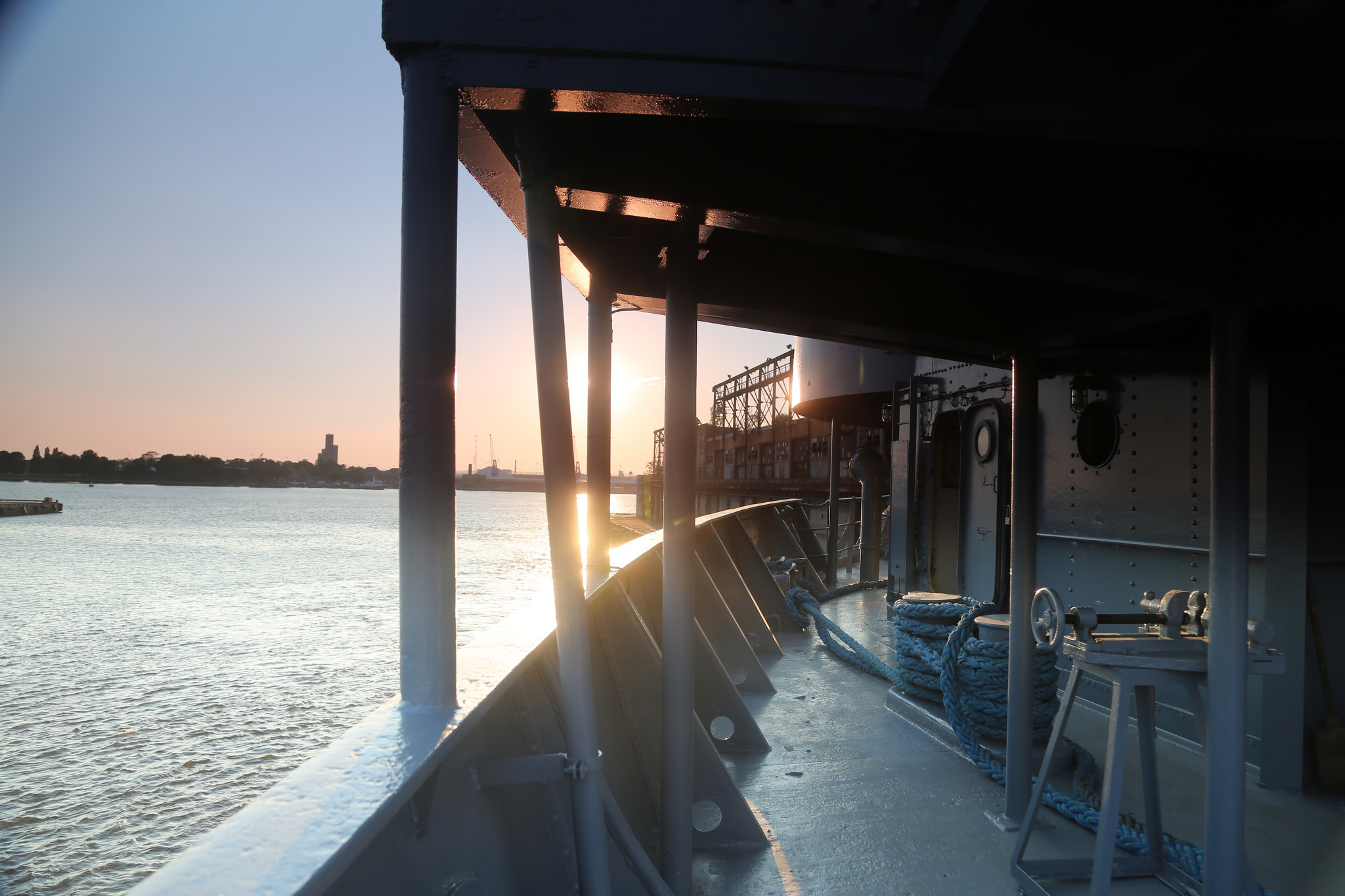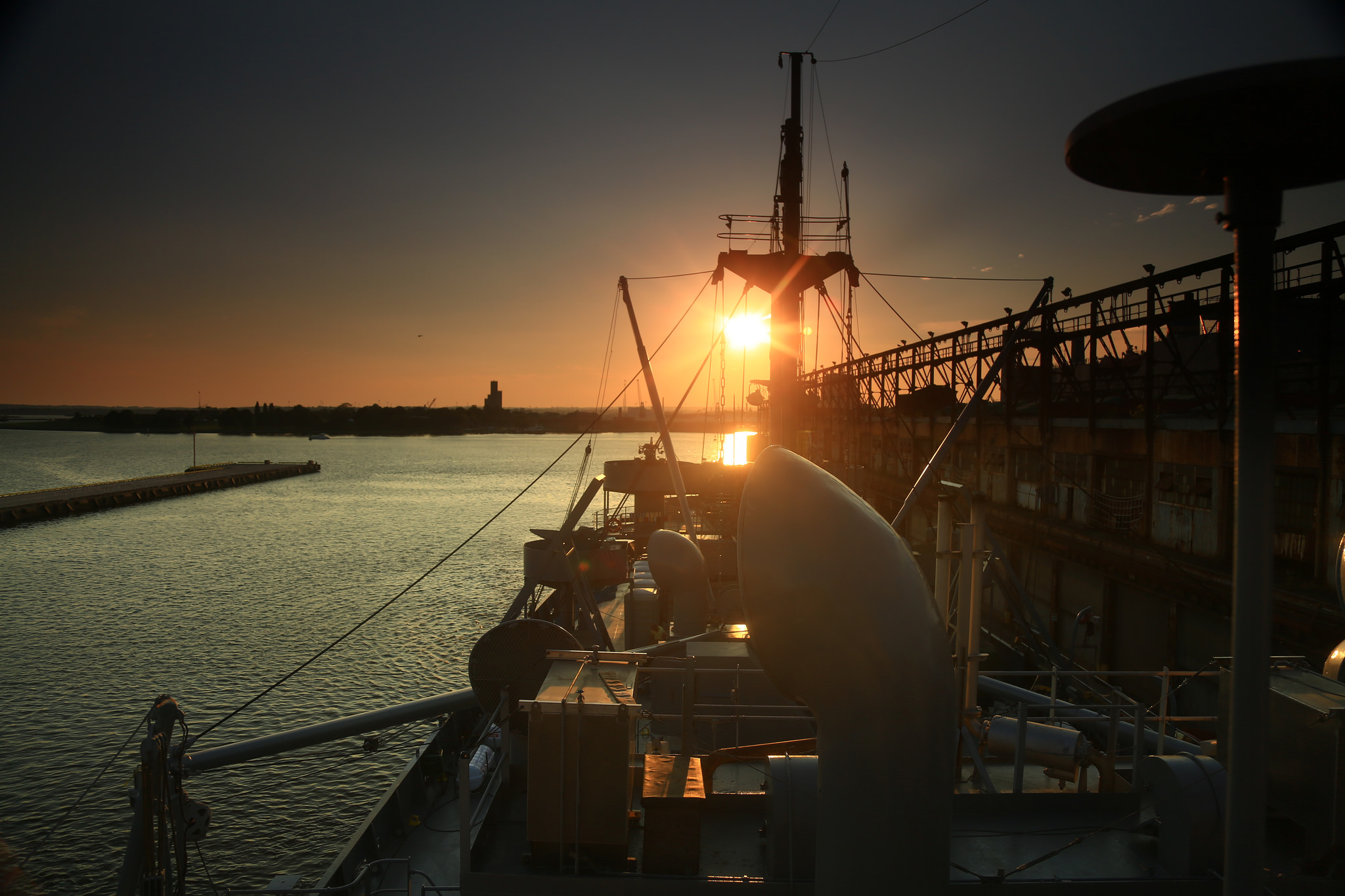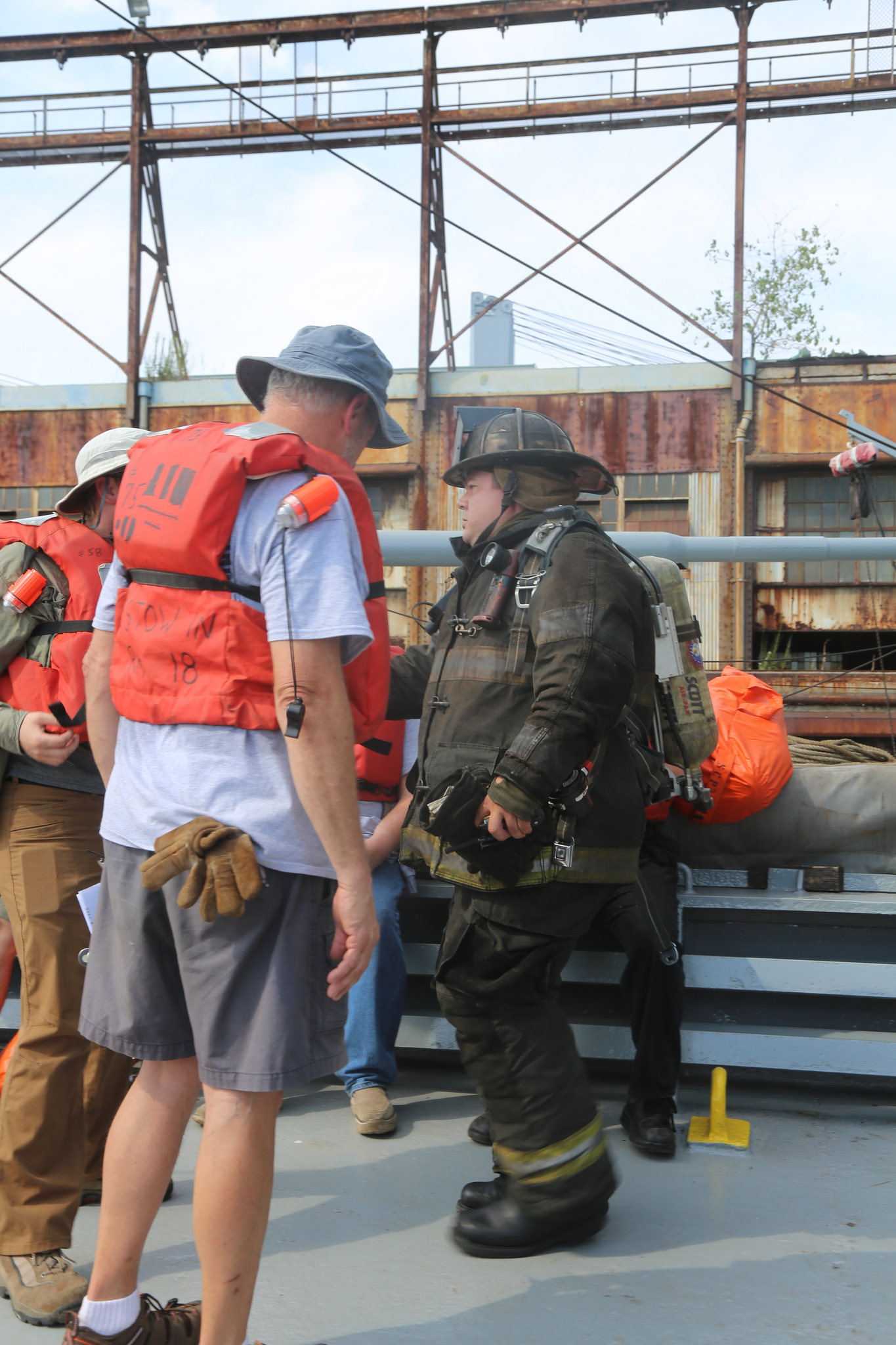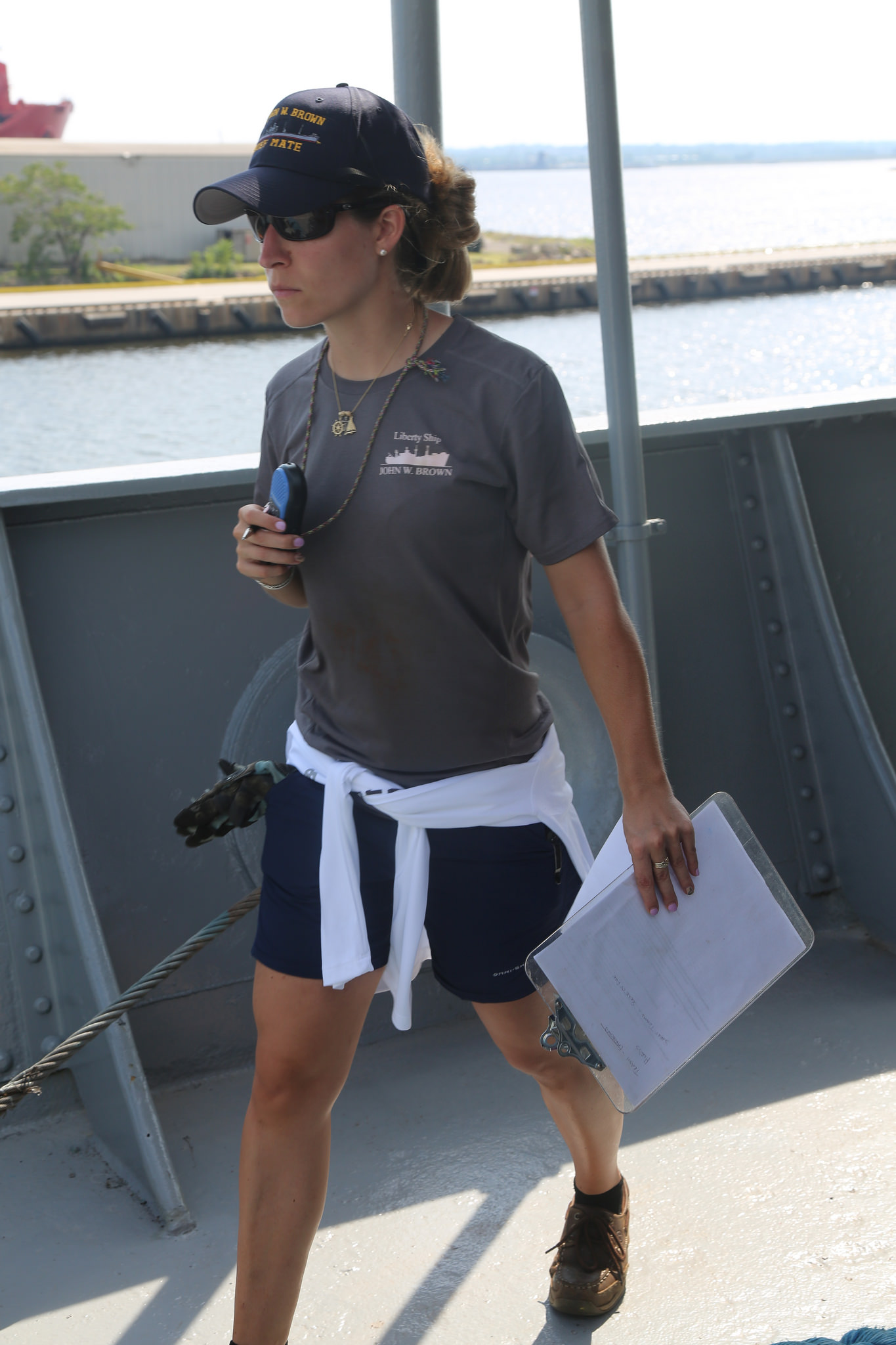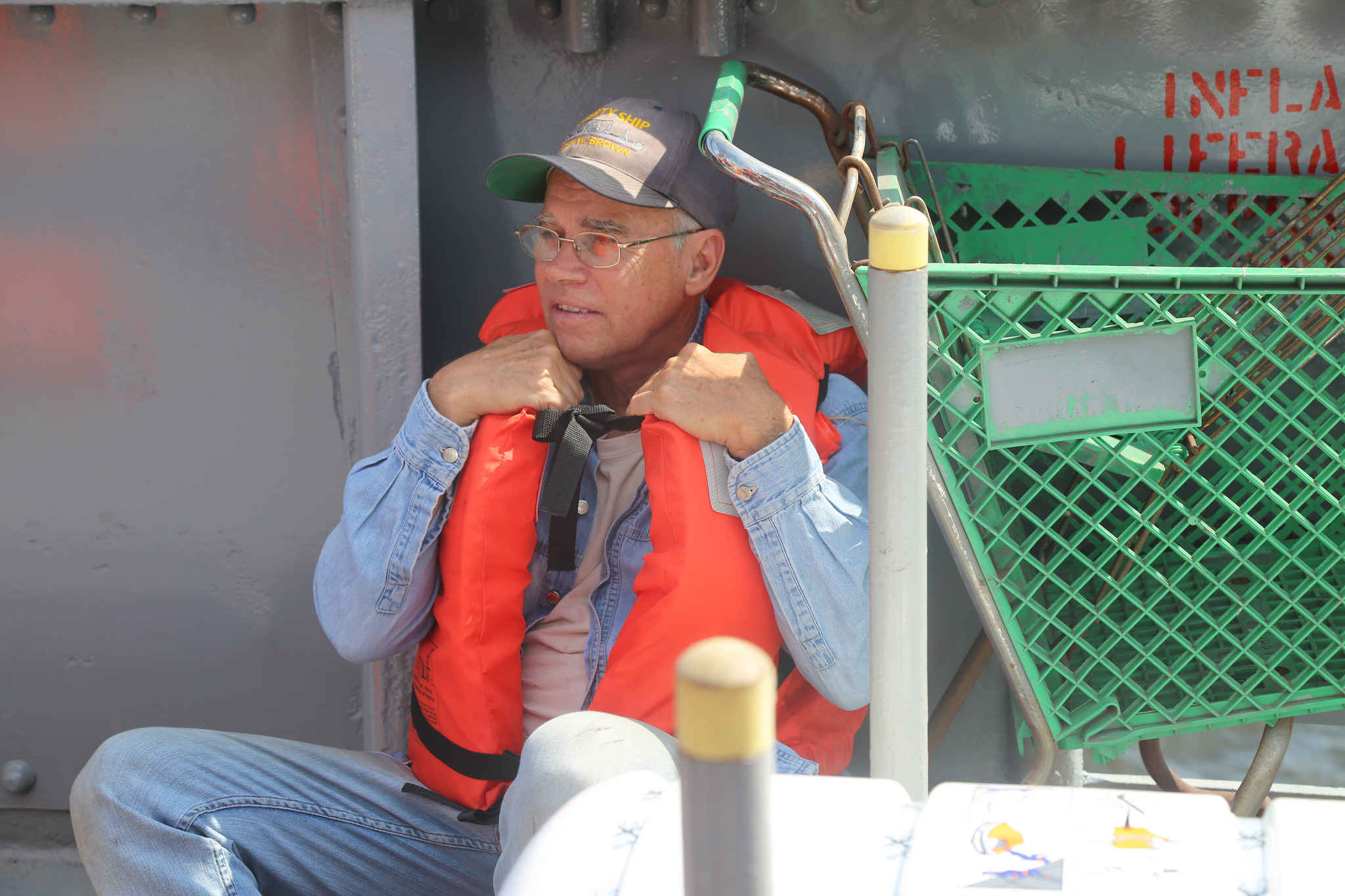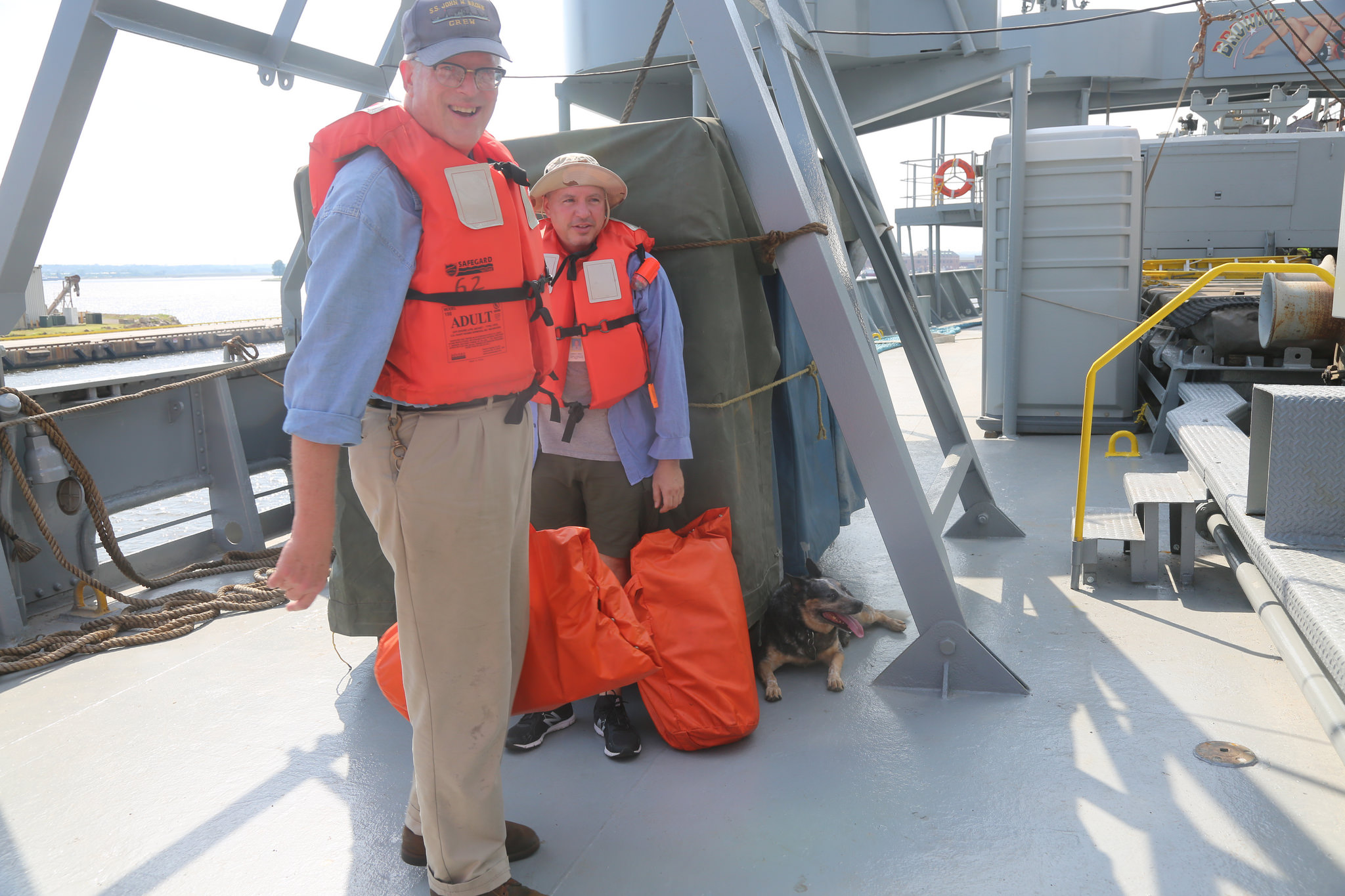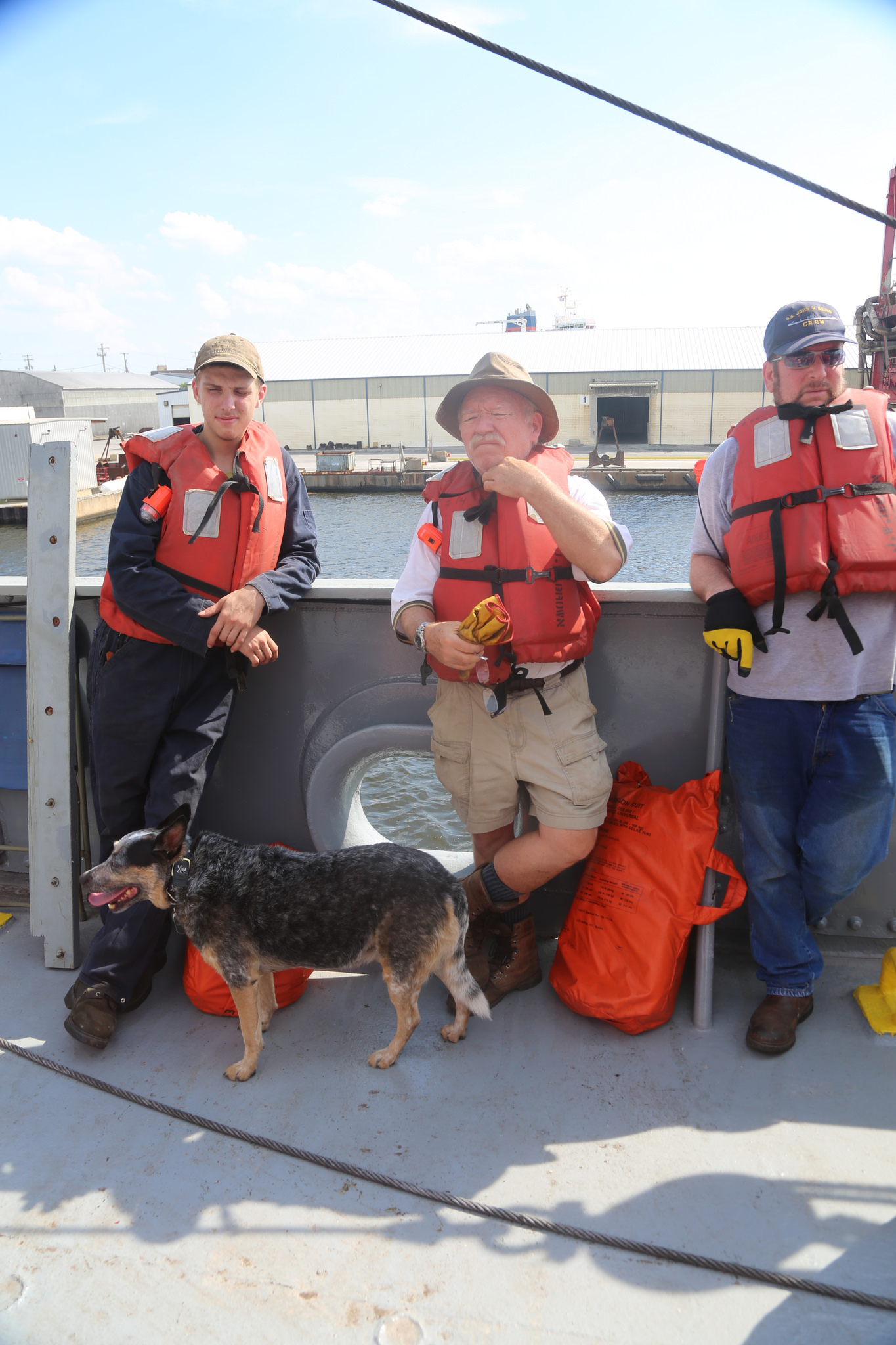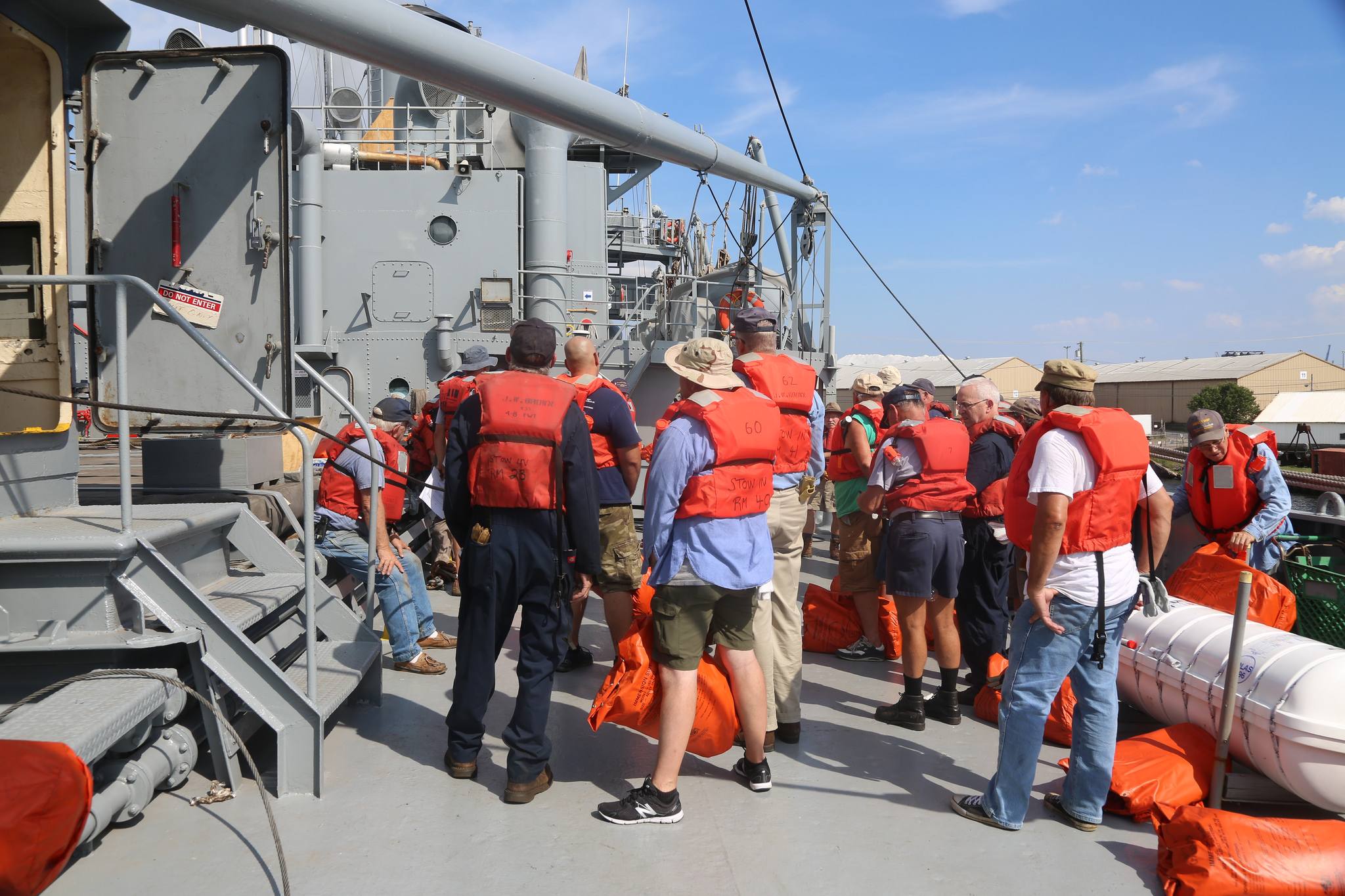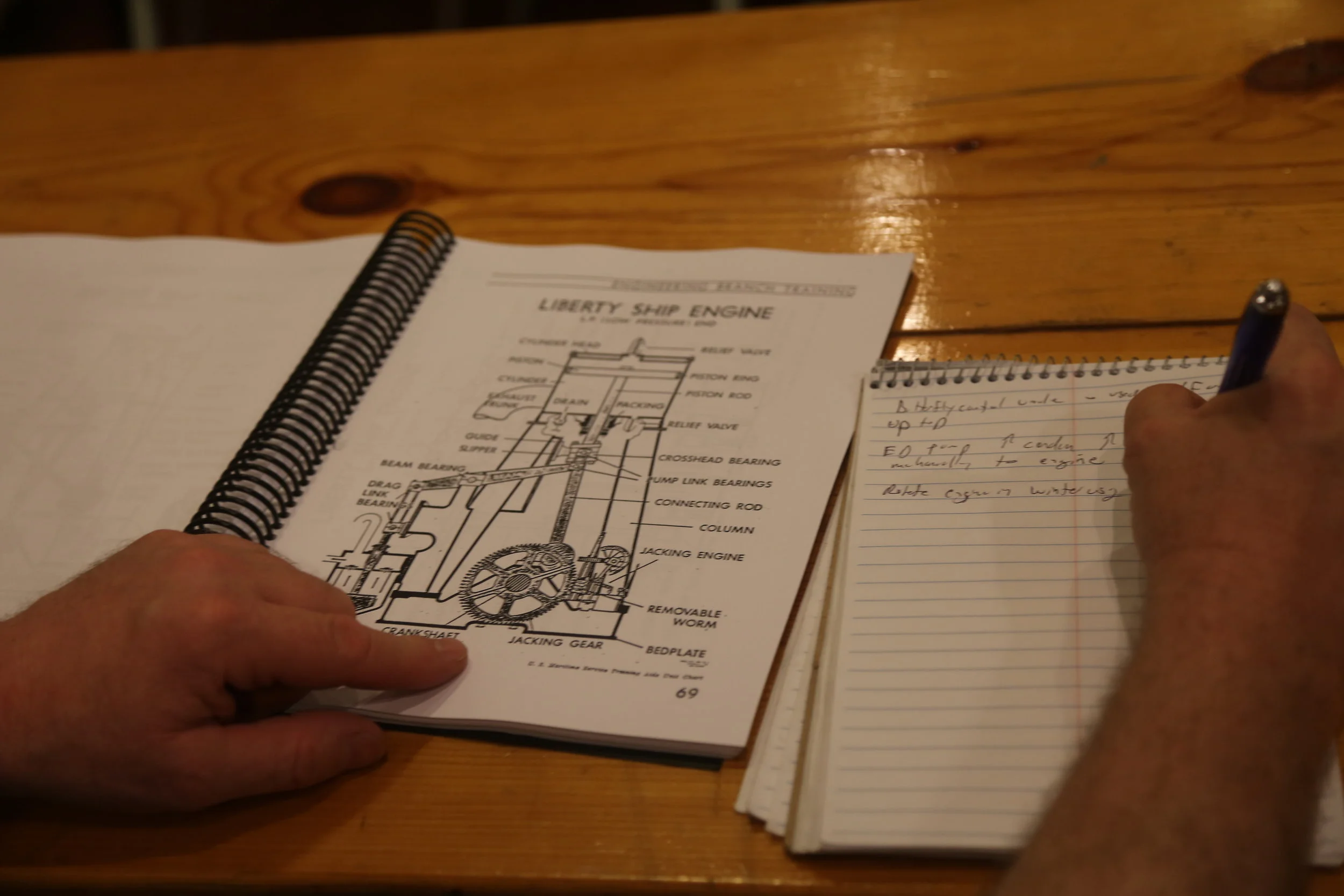As the collections manager aboard the SS John W Brown I come across a lot of information on ships being sunk during World War II. With the recent loss of the MV El Faro, I had a glimpse into that feeling of loss and what it was like for the Merchant Marine of World War II. On October 1, 2015, 33 mariners aboard the El Faro were caught in a hurricane with only their survival suits and open air lifeboats. Every mariner complains about weekly fire and lifeboat drills and having to re-certify their training every five years but when something like this happens, it all comes into focus.
While doing research at the Seaman’s Church oral history database the majority of the veterans talked about lifeboat and survival training. The biggest difference between my training and theirs was the mentality. For my generation it was “this may happen, but when it happens, it will be catastrophic.” For the World War II mariners it was “this will happen to you (probably more than once), this will save your life.”
The sinking of the El Faro happened while I was originally putting together this blog and this event snapped into focus the crux of what I hoped to accomplish with this blog post: a compelling story of war, an unforgiving ocean, and a hero: 2nd Cook James Gilbert Squires.
On March 9th 1943 The SS Malantic was steaming from New York to England in convoy SC 121. At 7:30 pm, local time, the Malantic attacked by U-409. The first torpedo struck the stern (the aft end) and thirty seconds later a second torpedo struck near the number 1 cargo hold, forward. The Malantic immediately began to list and the order for abandon ship was given. The master, who was injured, and ten other crew members launched in Lifeboat 1, starboard side while the chief mate and 29 other mariners launched Lifeboat 2.
It took about an hour for the SS Malantic to sink and another hour for the rescue ship SS Melrose Abbey to rescue the survivors. Third Mate Einar Tessam, in Lifeboat 2, saw 5 or 6 bodies in the water; they weren’t moving because they had already succumbed to hypothermia. The water was close to freezing that night and the seas had 30 foot swells.
The SS Melrose Abbey rescued Lifeboat 1 first. The seas were rough so 2nd Cook James G. Squires manned the lines to keep the lifeboat made fast to the Melrose Abbey. This action made getting the injured master of the Malantic and 9 other crew aboard much easier and quicker, also ensuring nobody was lost overboard. While attempting to get to the rescue net from the lifeboat Mr. Squires was caught in between the vessel and the lifeboat. In his exhaustion from working the lines during the rescue he could not pull himself up, a large wave came by and he was taken out to sea and never seen again.
While the SS Melrose Abbey was rescuing lifeboat 2 the lifeboat capsized. Only “9 or 10” of the mariners in that lifeboat made it aboard the SS Melrose Abbey.
The survivors were taken to Scotland, returned to service, and the story of 2nd Cook James Squires’ heroism made its way to the desks of the US Naval Forces Europe, War Shipping Administration, Maritime Commission, and Office of Naval Intelligence. Testimonies were given by several crew and the next of kin to James Squires were presented an award for his heroism.
This was just one night in a war that lasted for two more years.
Below is the digitized contents of the file for this incident. This is just one object in our Collections.
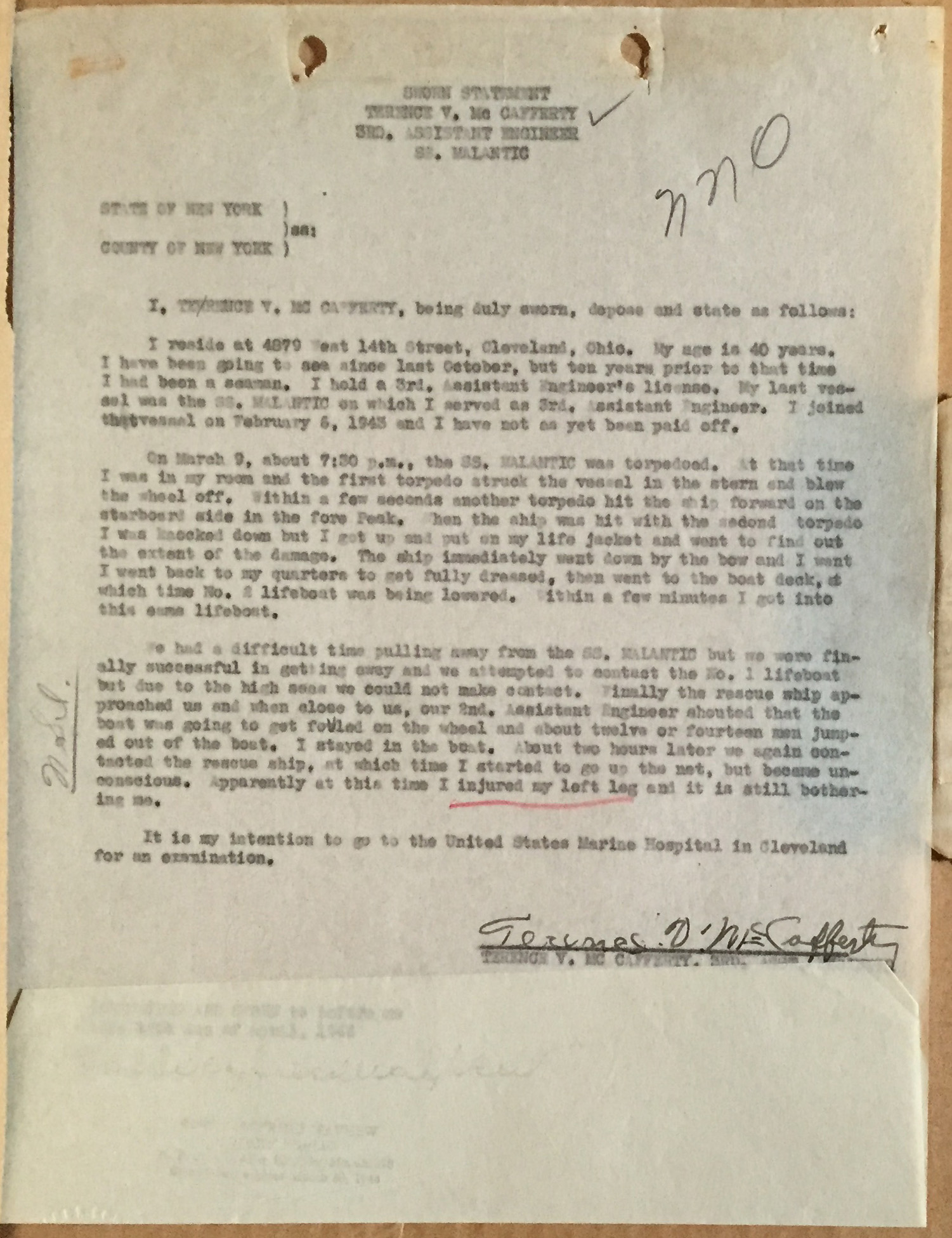
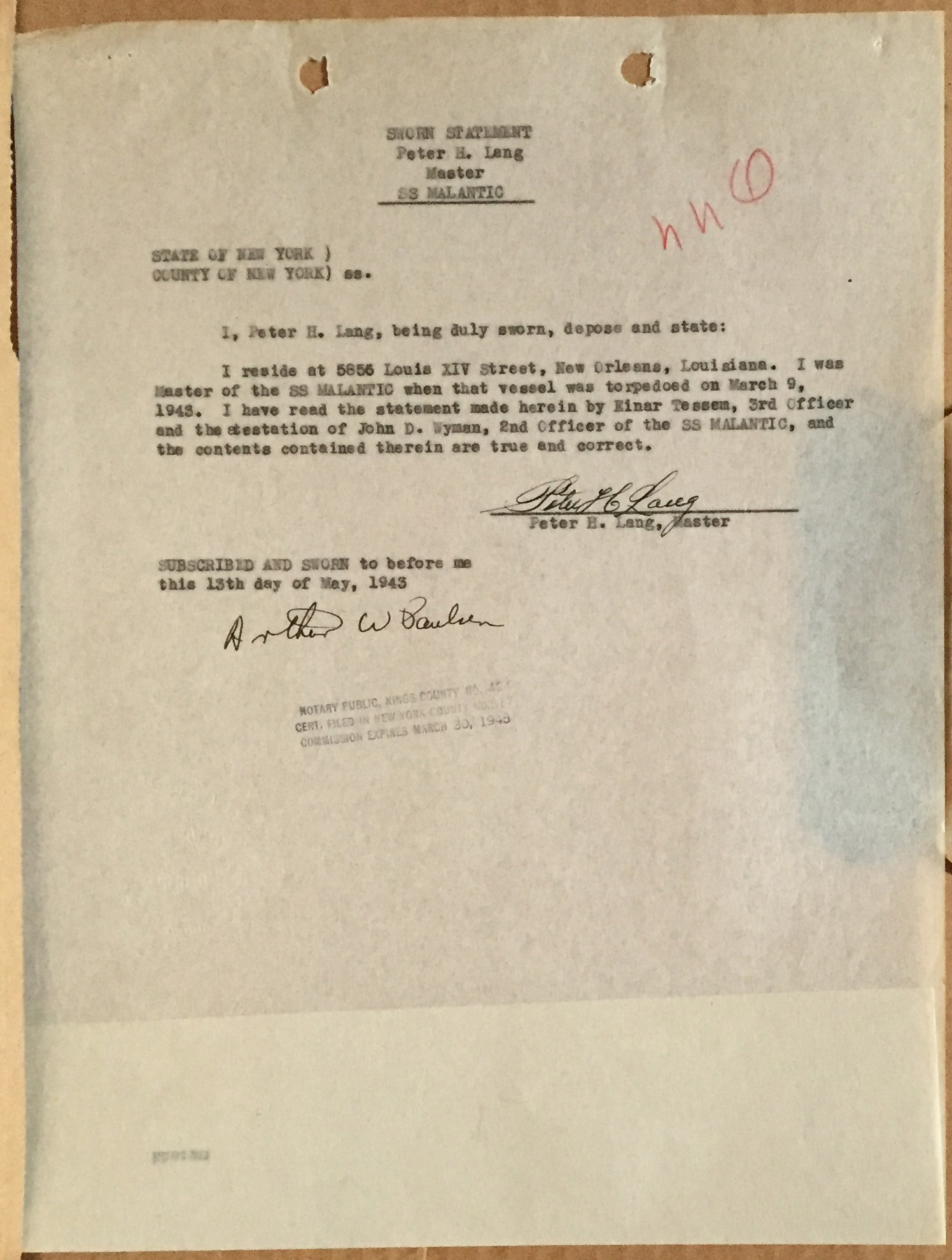
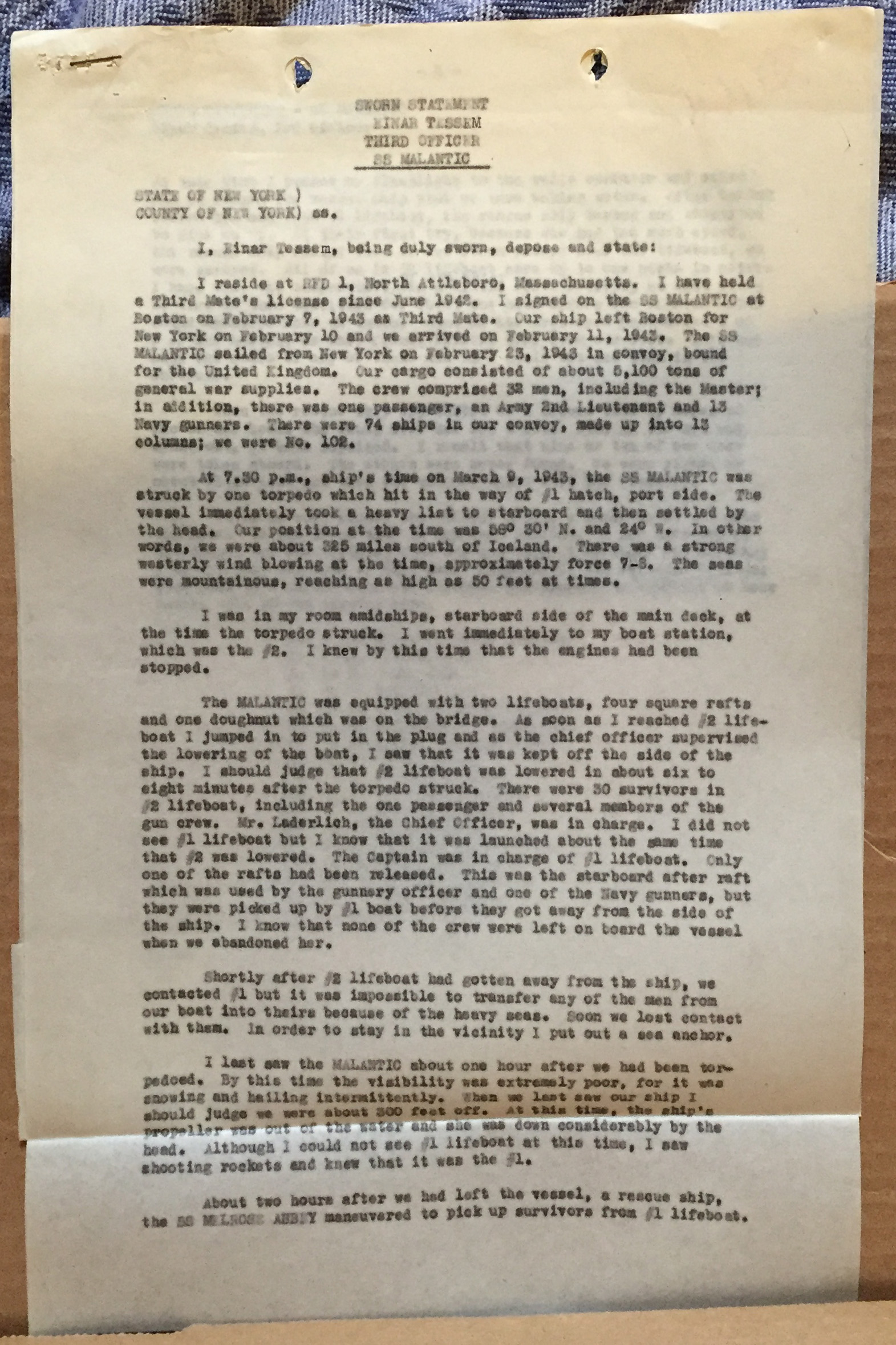

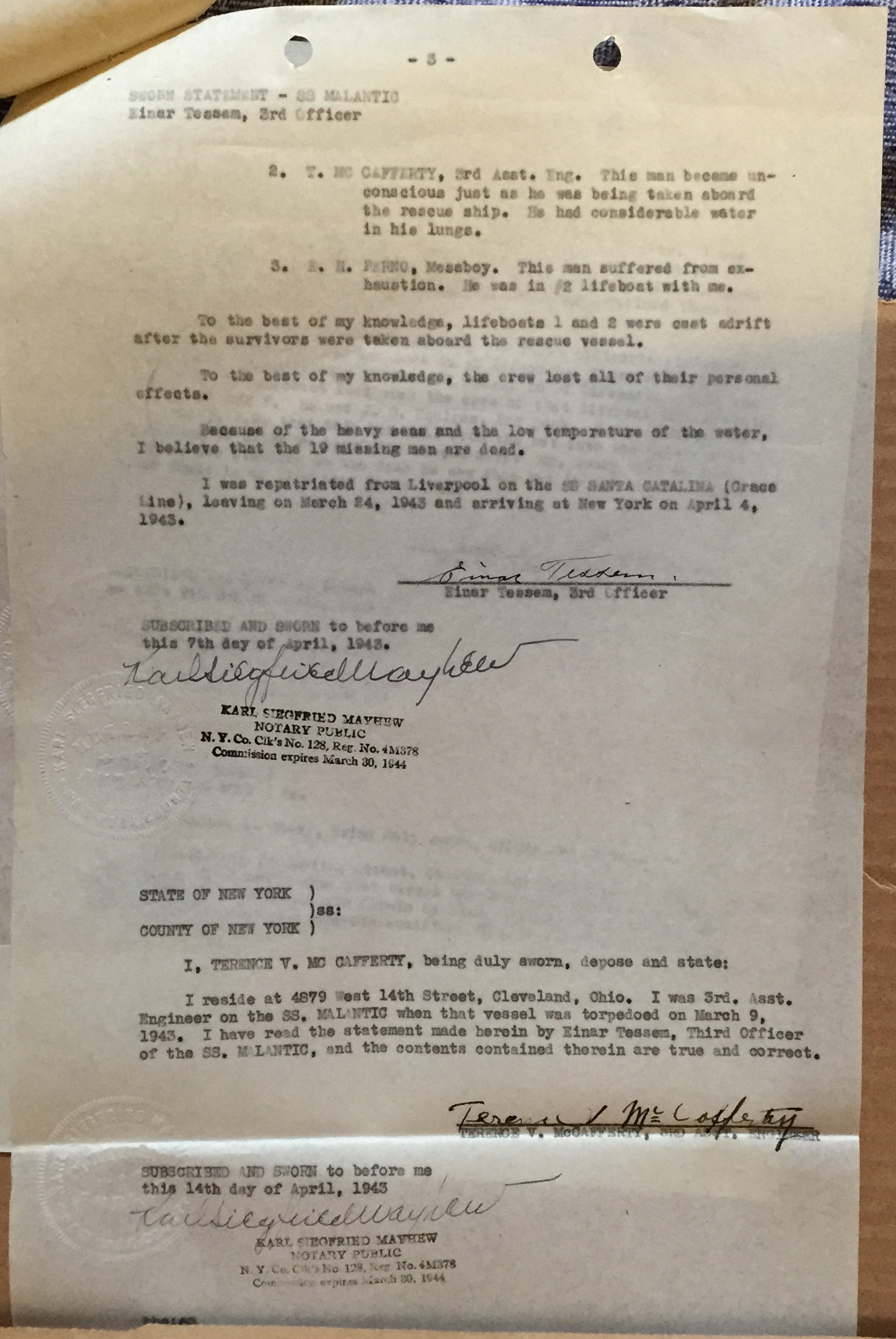
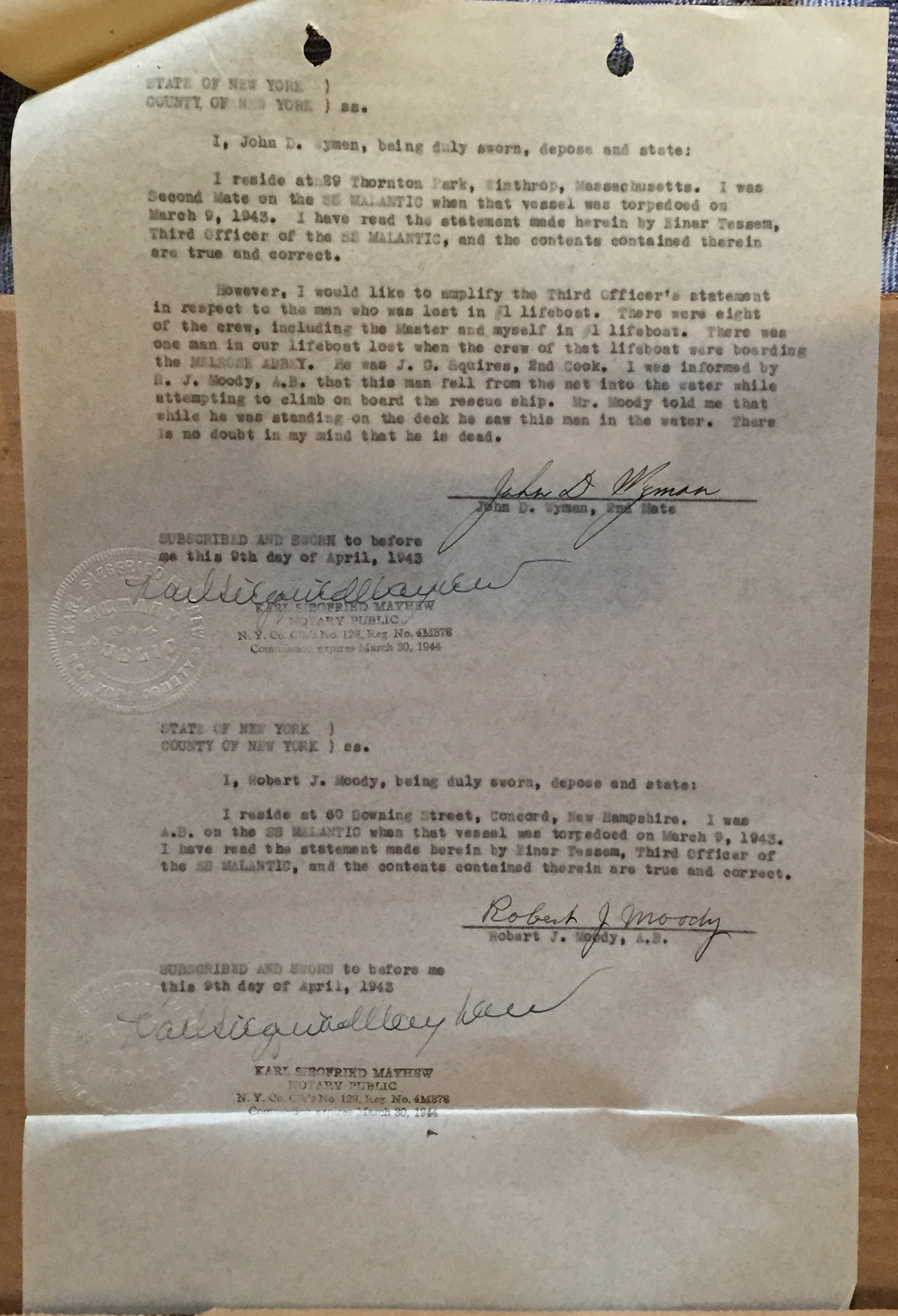
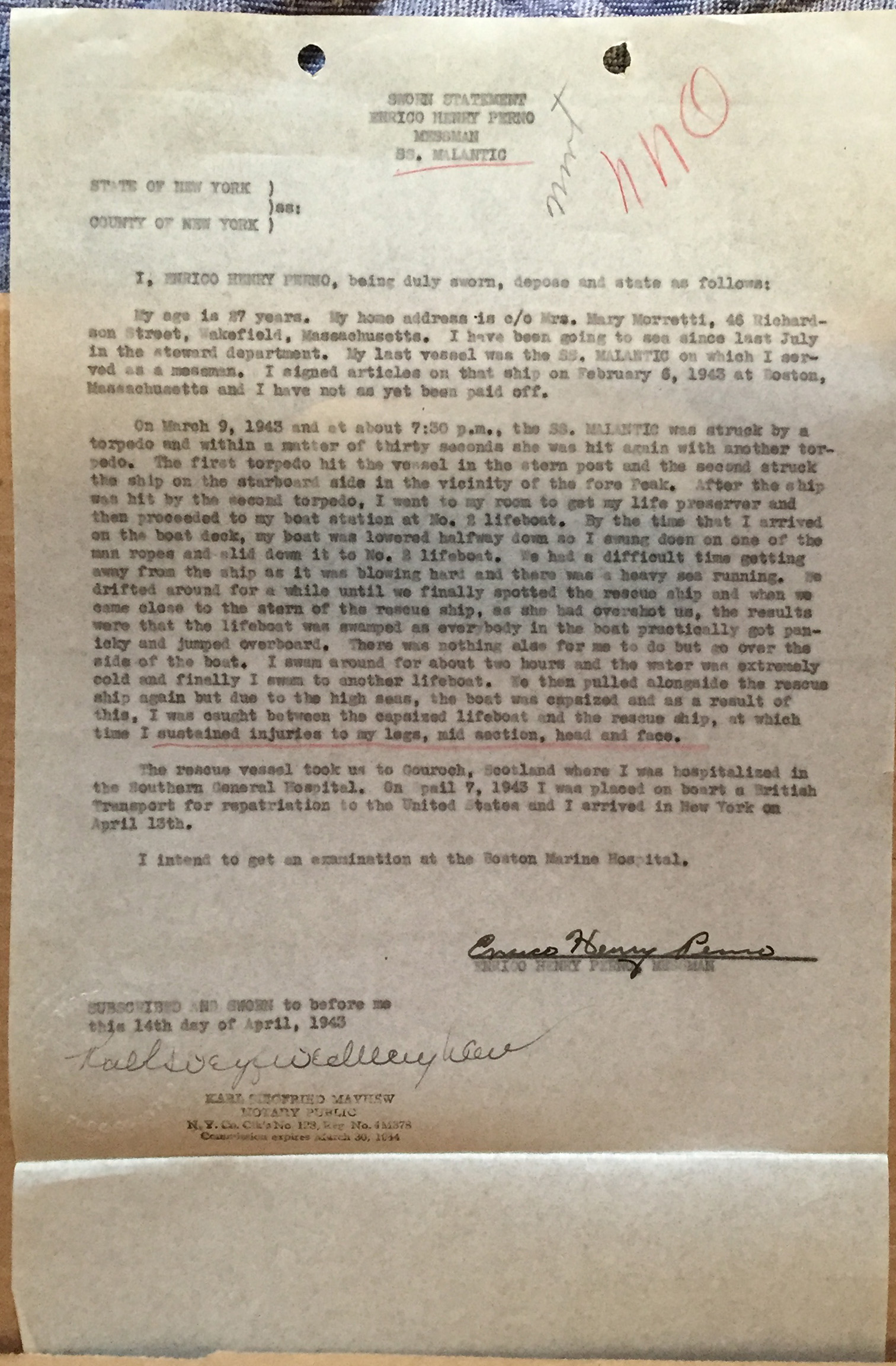

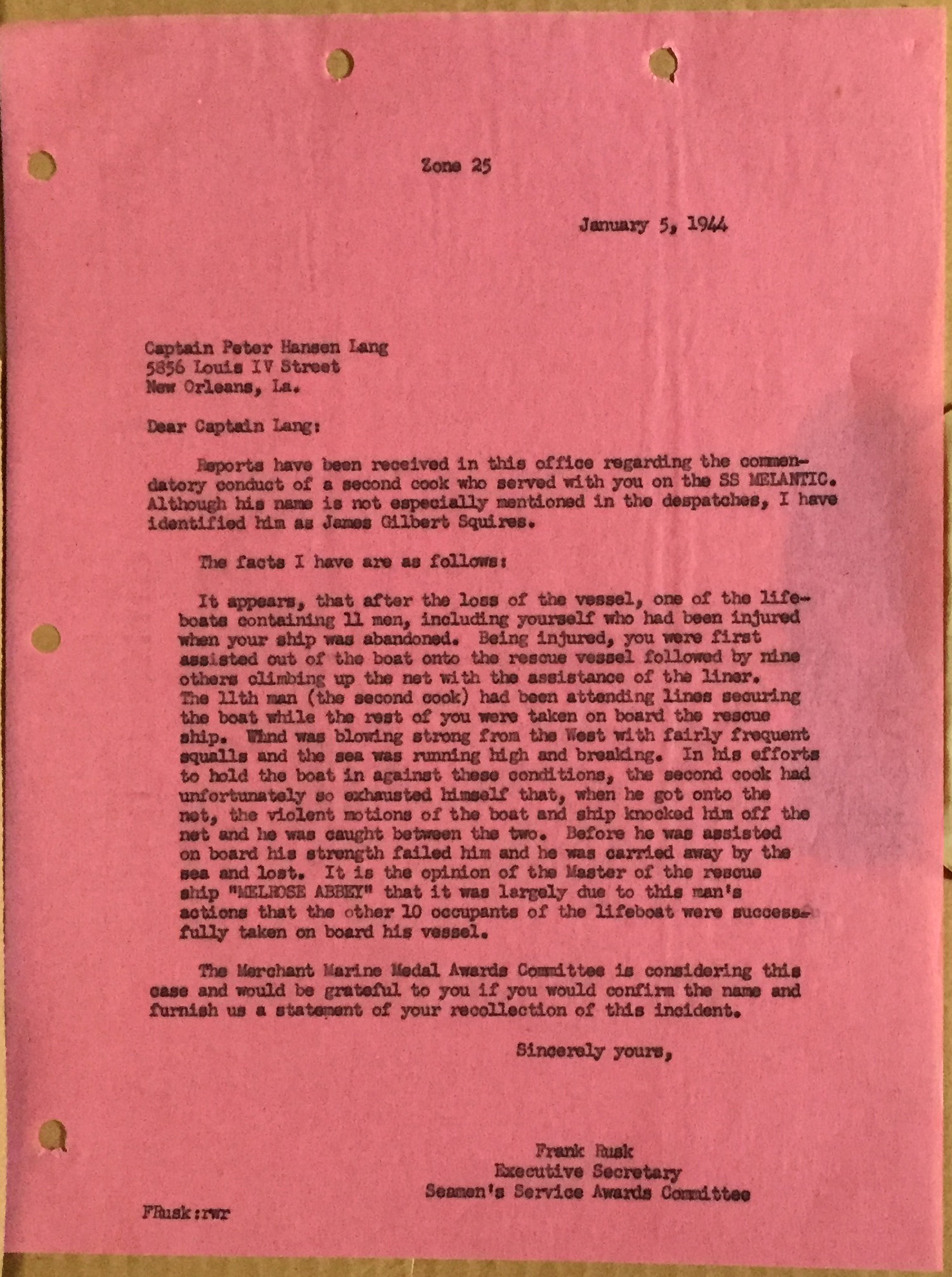

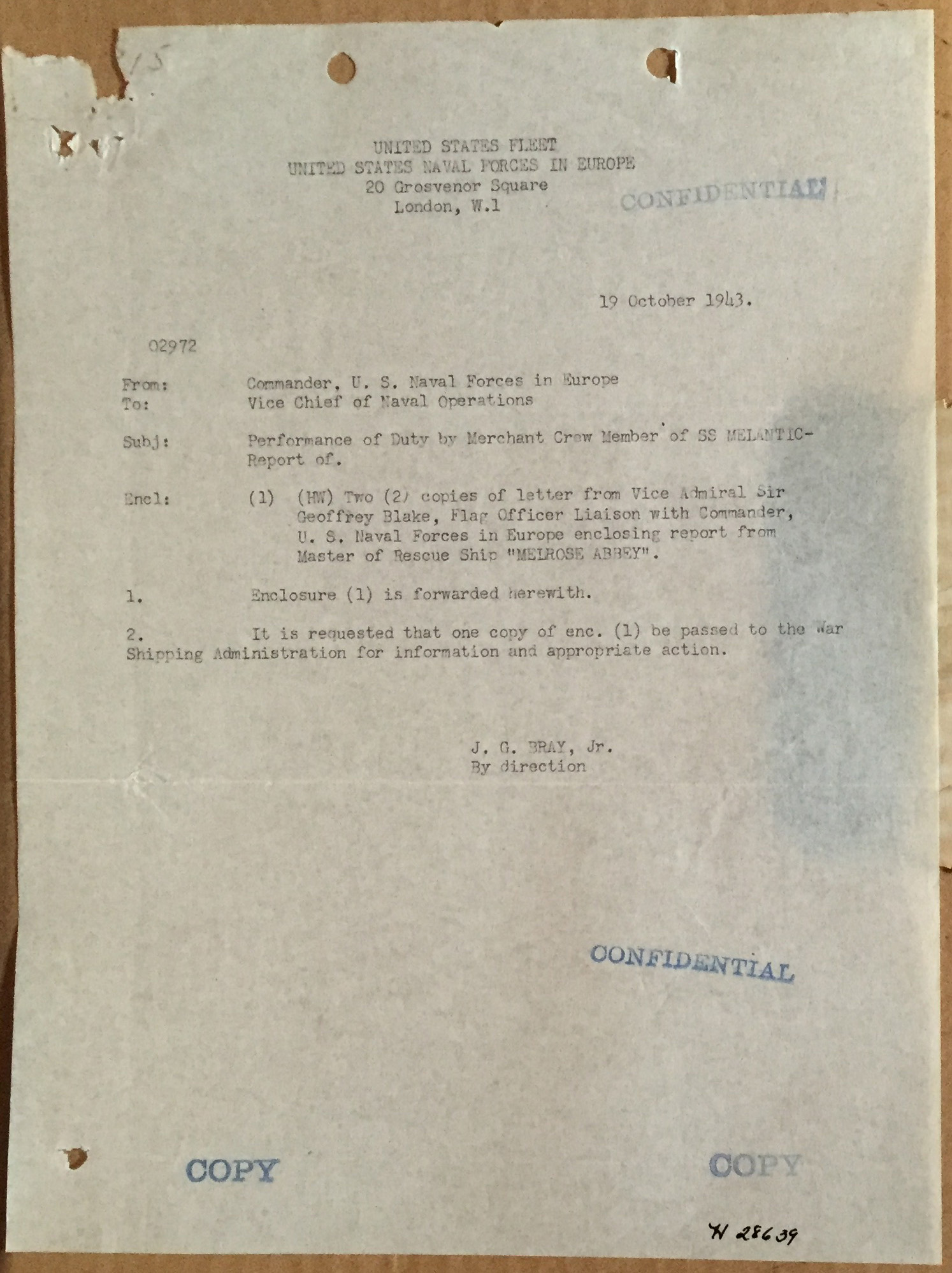
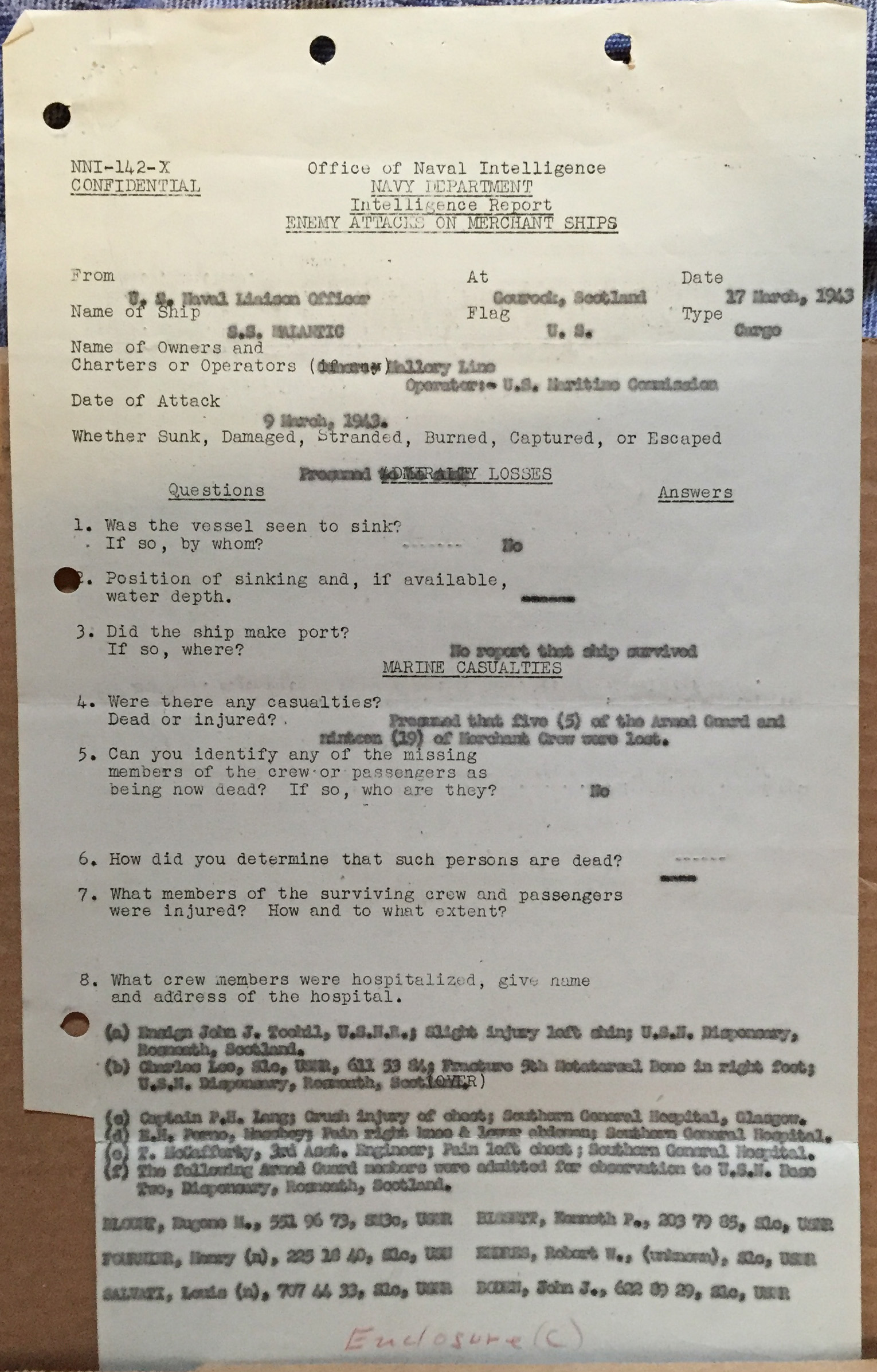
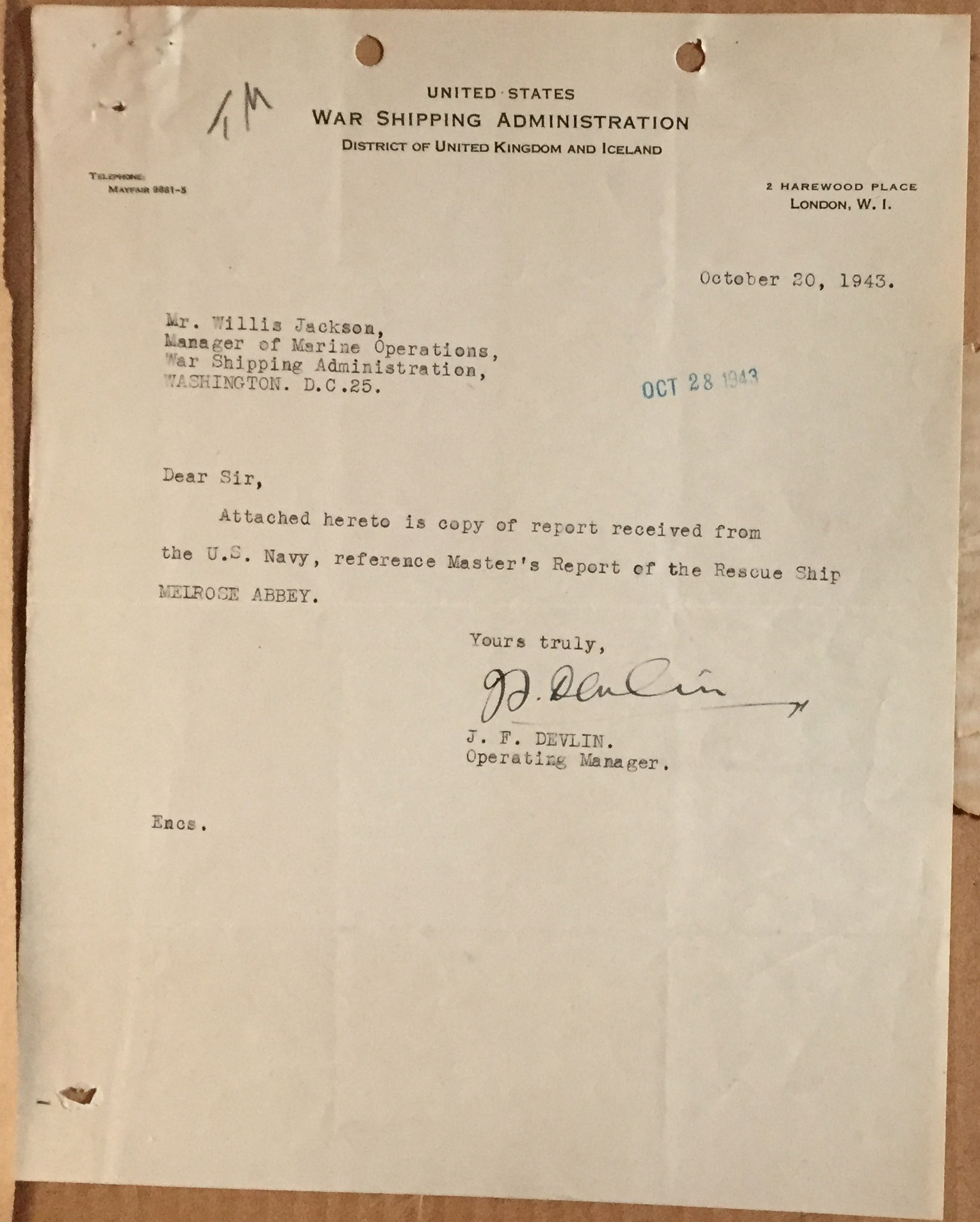
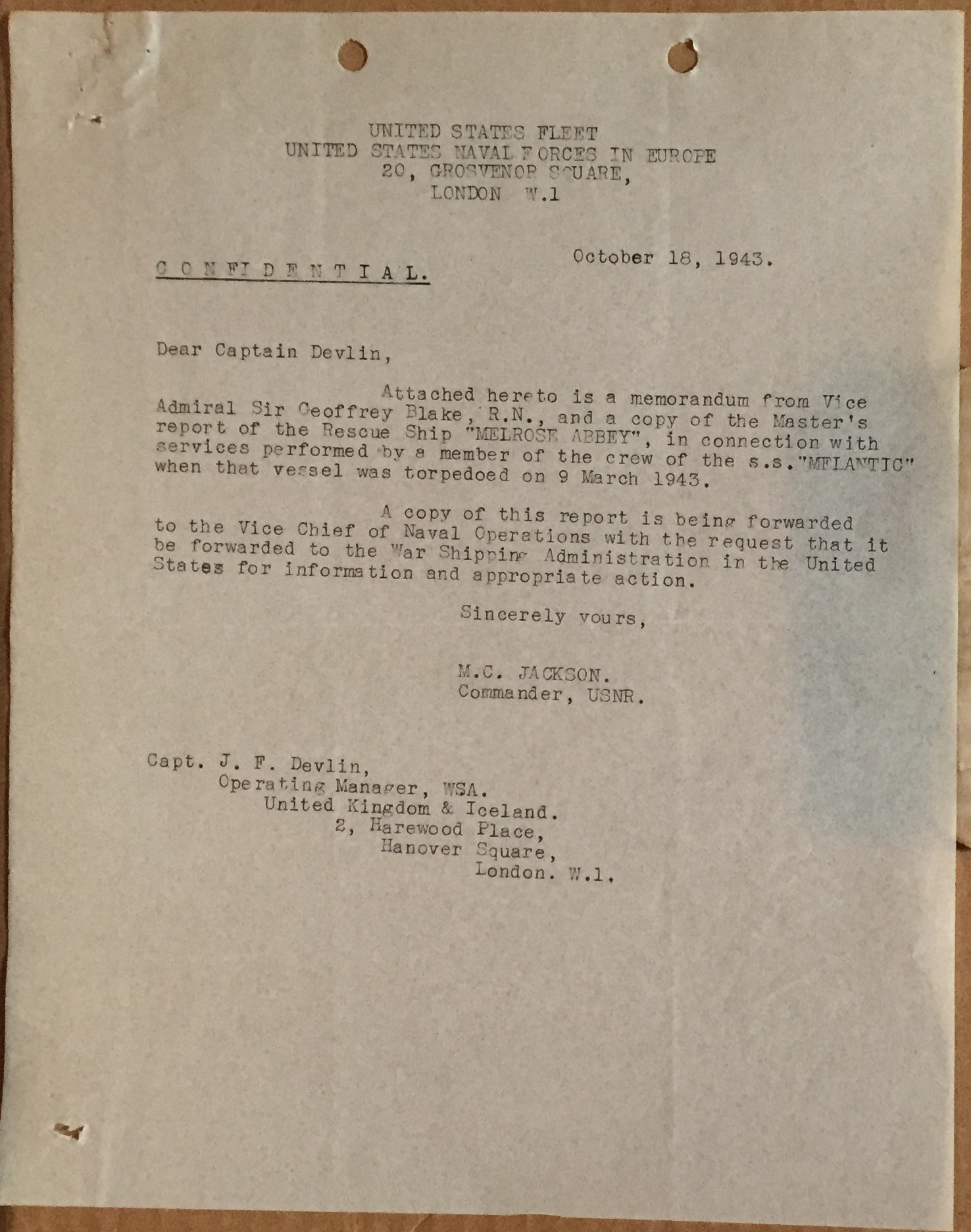
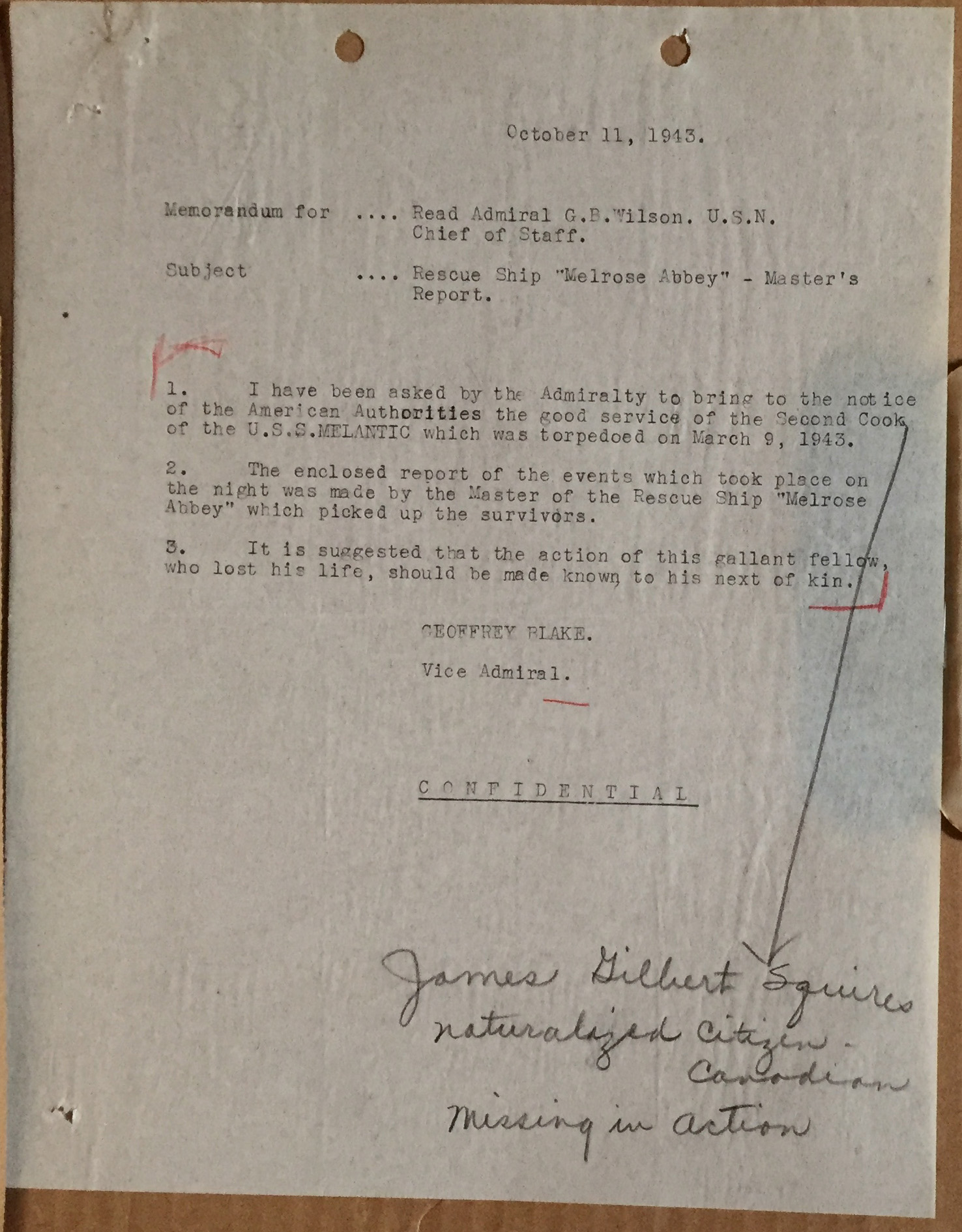
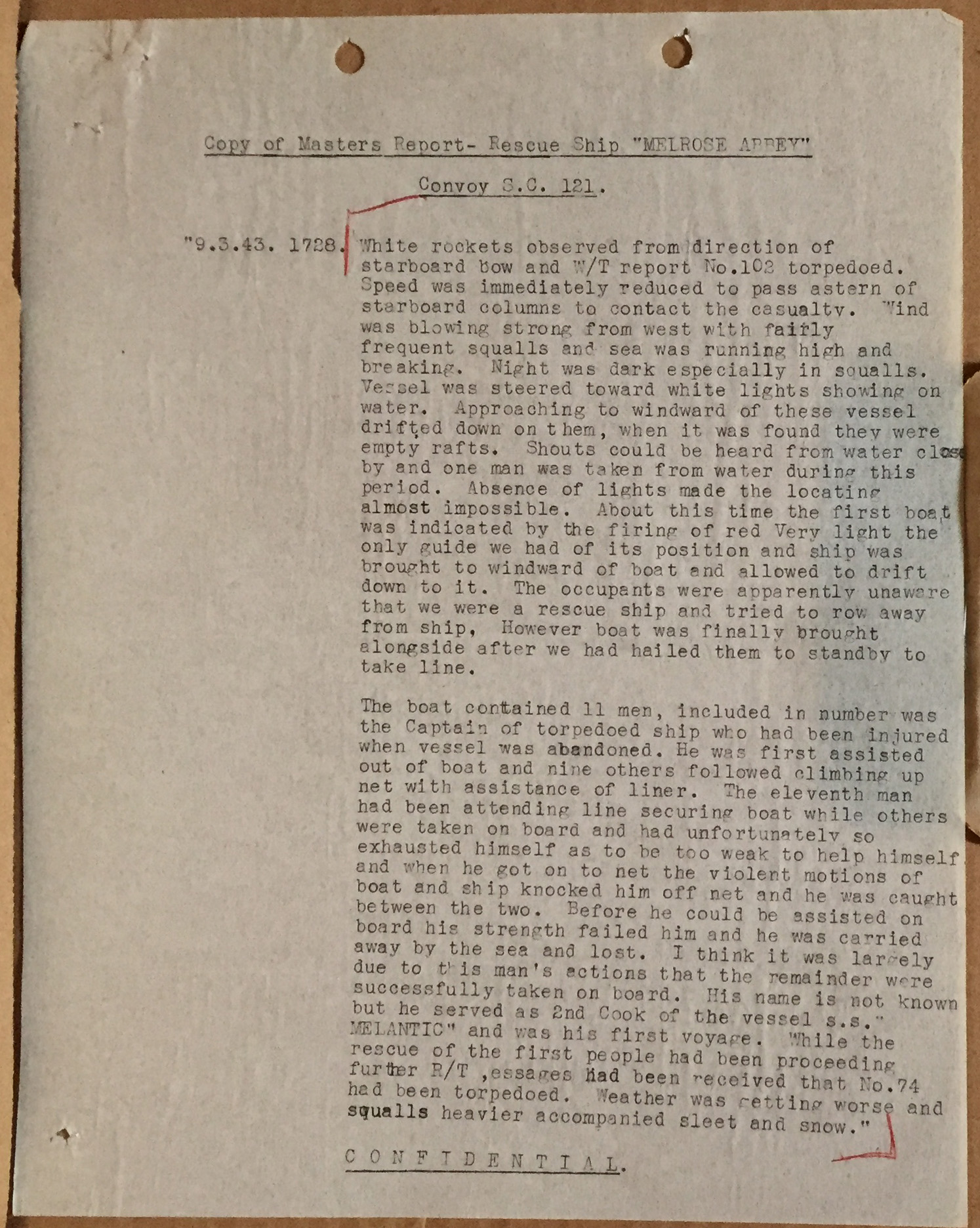
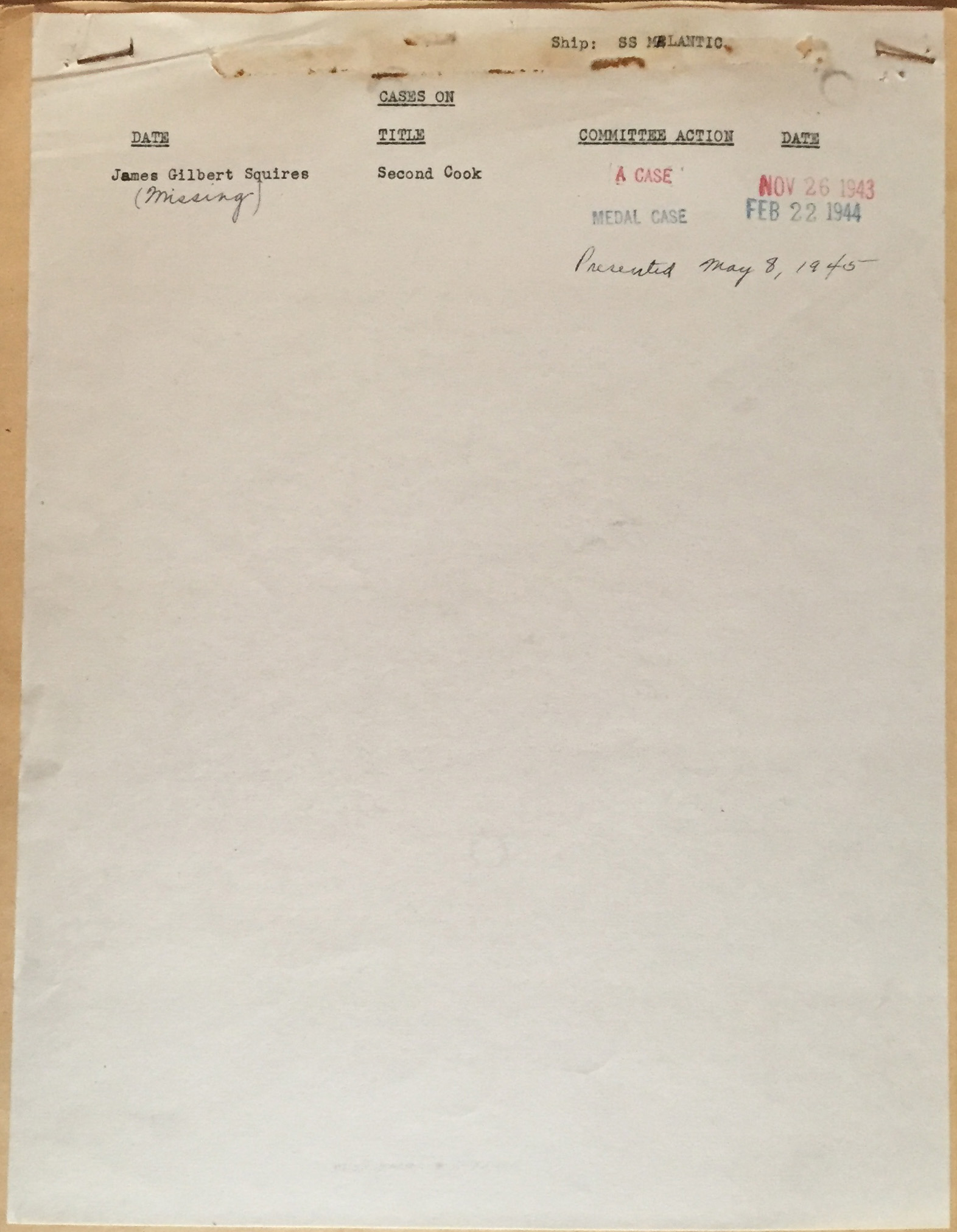
Not much more to say. We think about and pray for peace for all the families that are living this nightmare today. This happened to more of our men in WWII then we can even put an exact number on, due to the documentation practices during the war. Technology today speeds things up, much more, but the pain that the families feel is tangible.
Project Liberty Ship, Inc is a 501(c)3 non-profit, all volunteer organization engaged in the preservation and operation of the historic ship JOHN W. BROWN as a living memorial museum. Gifts to Project Liberty Ship are tax deductible.
